Best country houses for sale this week
A spectacular Scottish home with a price tag £550,000 is one of the gems this week.

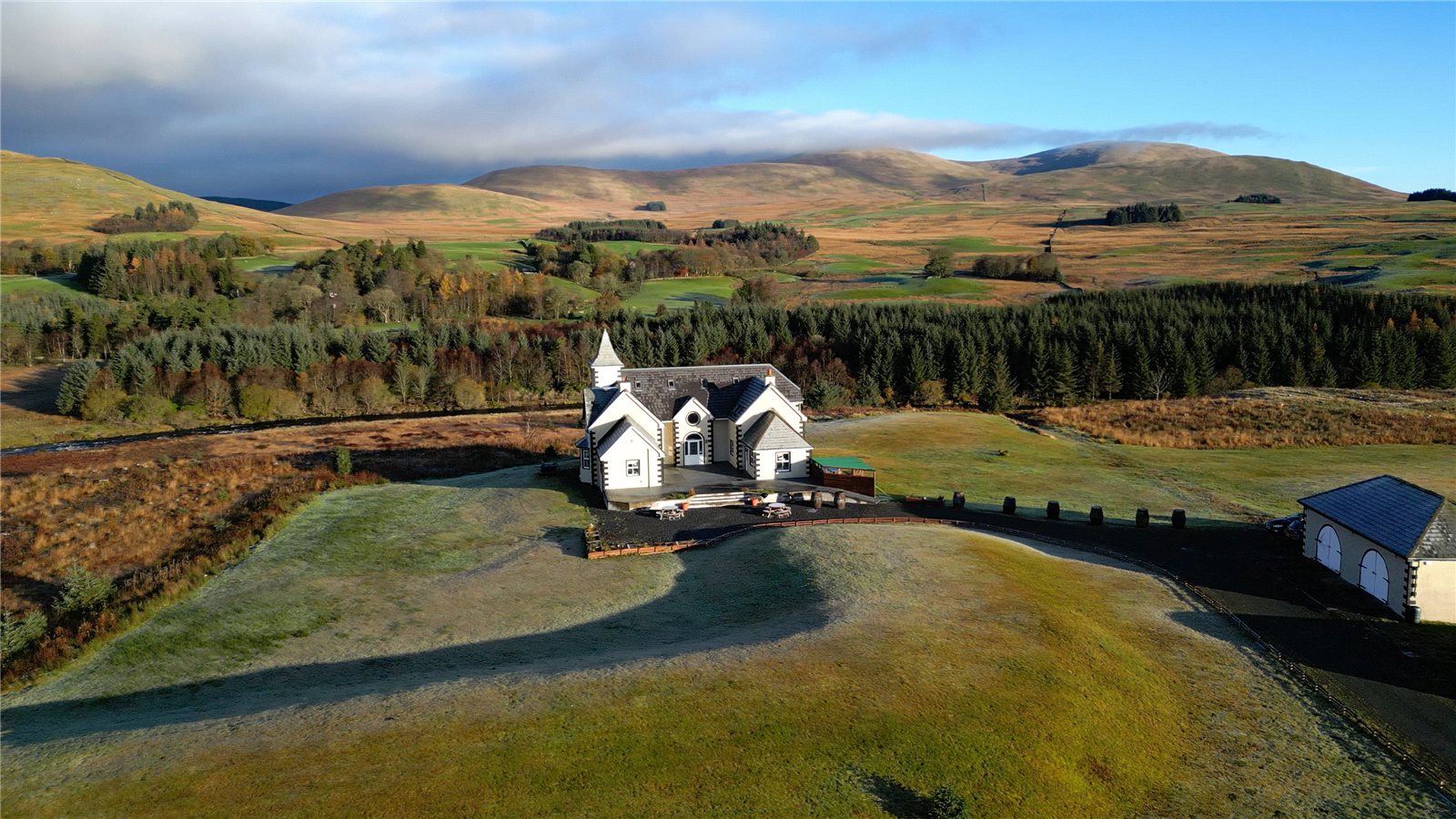
Scotland — £5,500,000

Just off the west coast of Scotland lies Shuna Island, a true playground of open spaces, natural beauty, wildlife, beaches and — yes — a castle. And it's looking for a new owner. https://www.countrylife.co.uk/property/white-sand-beaches-smugglers-coves-teeming-wildlife-and-a-ruined-castle-in-a-scottish-island-thats-on-the-market-for-the-first-time-in-almost-a-century
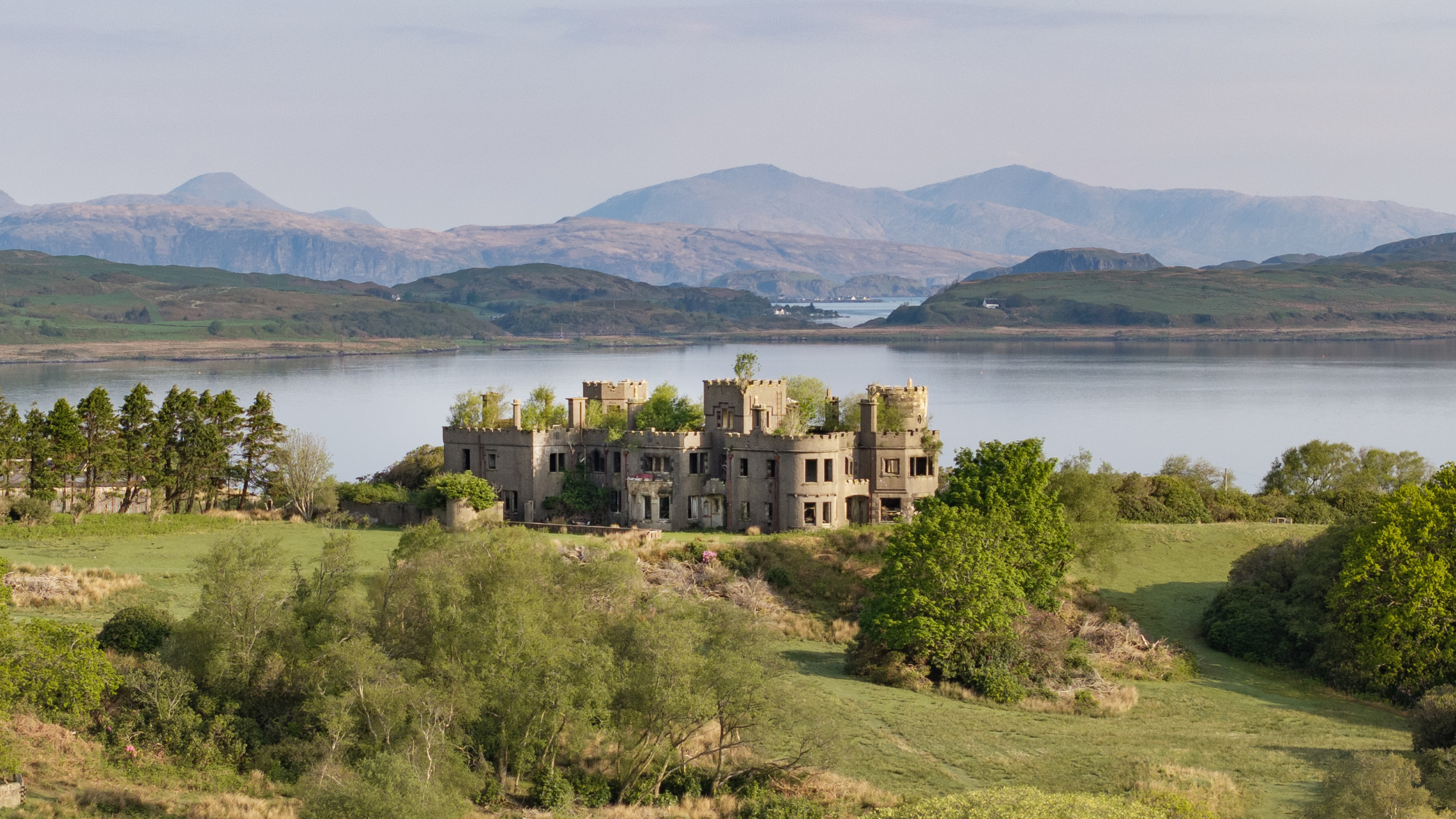
For sale via Knight Frank — see more details and pictures.
Buckinghamshire — £1,900,000
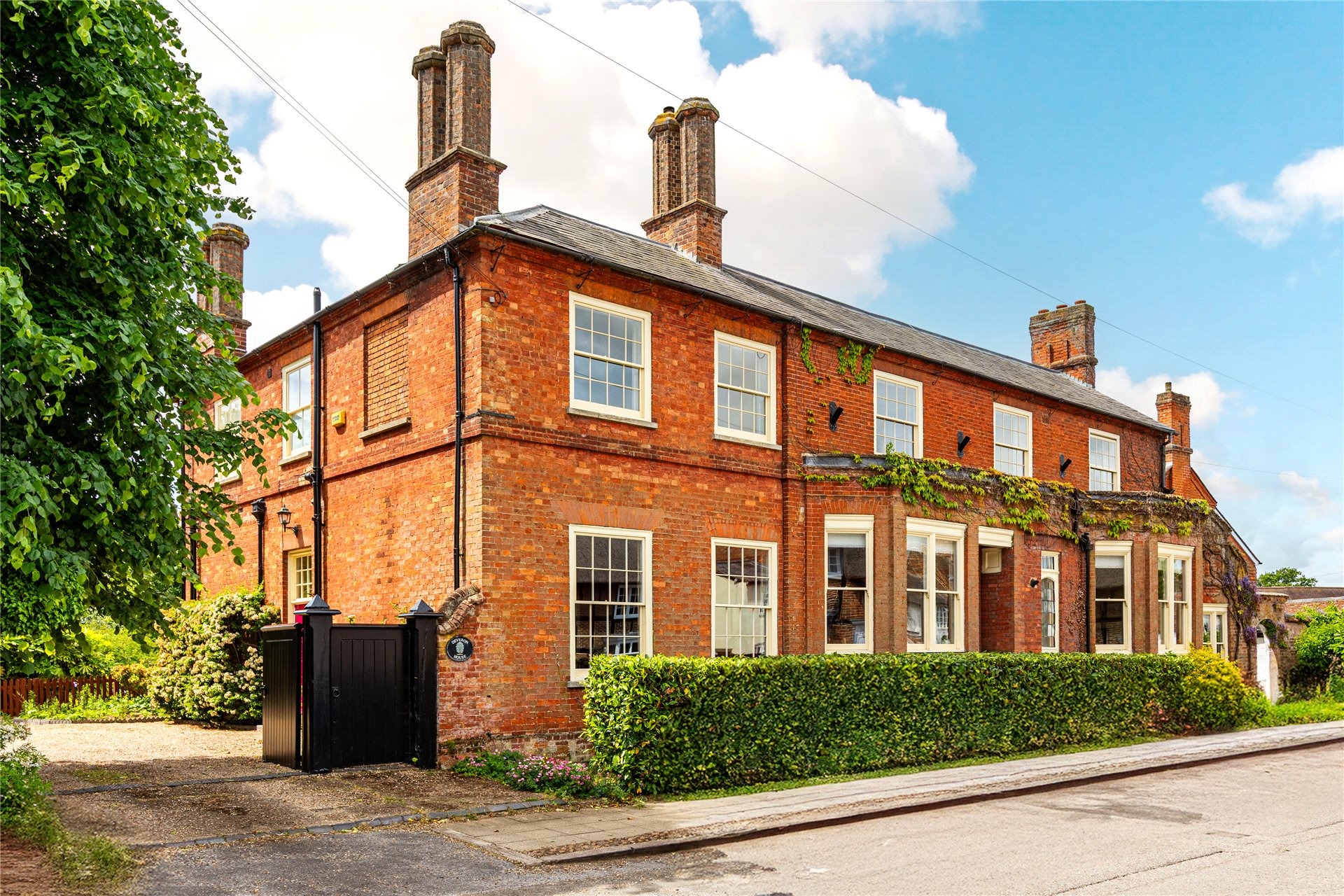
A seven-bedroom home that looks like something from a glossy costume drama, in the heart of the pretty town of Winslow.
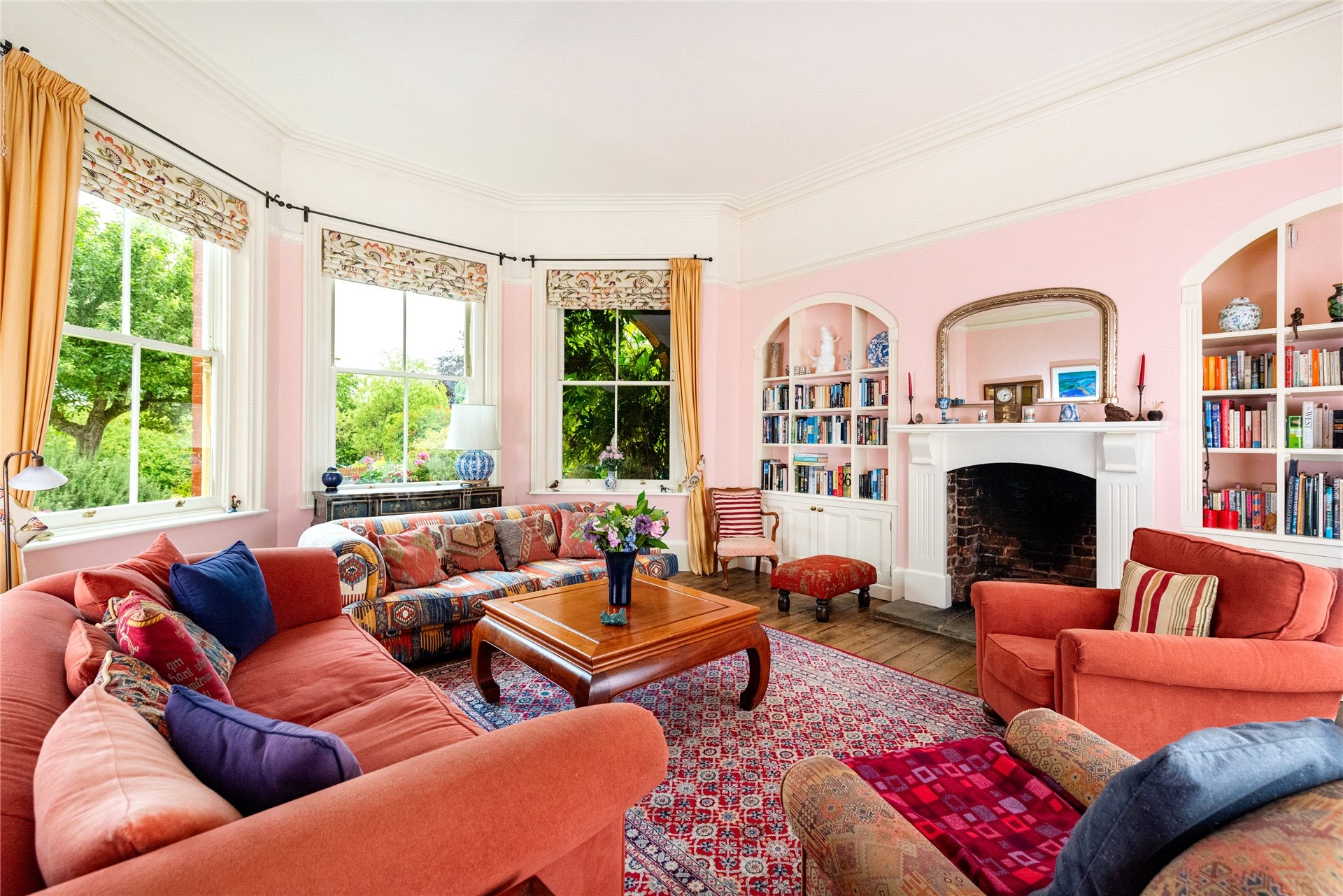
For sale via Michael Graham — see more details and pictures.
North Yorkshire — £850,000

Period property elegantly renovated and complemented by a range of outbuildings, large gardens and views of the White Horse.
For sale via Blenkin & Co — see more details and pictures.
Dumfries and Galloway — £550,000

Cumnock Knowes provides extensive accommodation space over three floors, sitting in a stunning rural location, with far reaching countryside views.
Exquisite houses, the beauty of Nature, and how to get the most from your life, straight to your inbox.
For sale via Galbraith — see more details and pictures.
Suffolk — £1,500,000
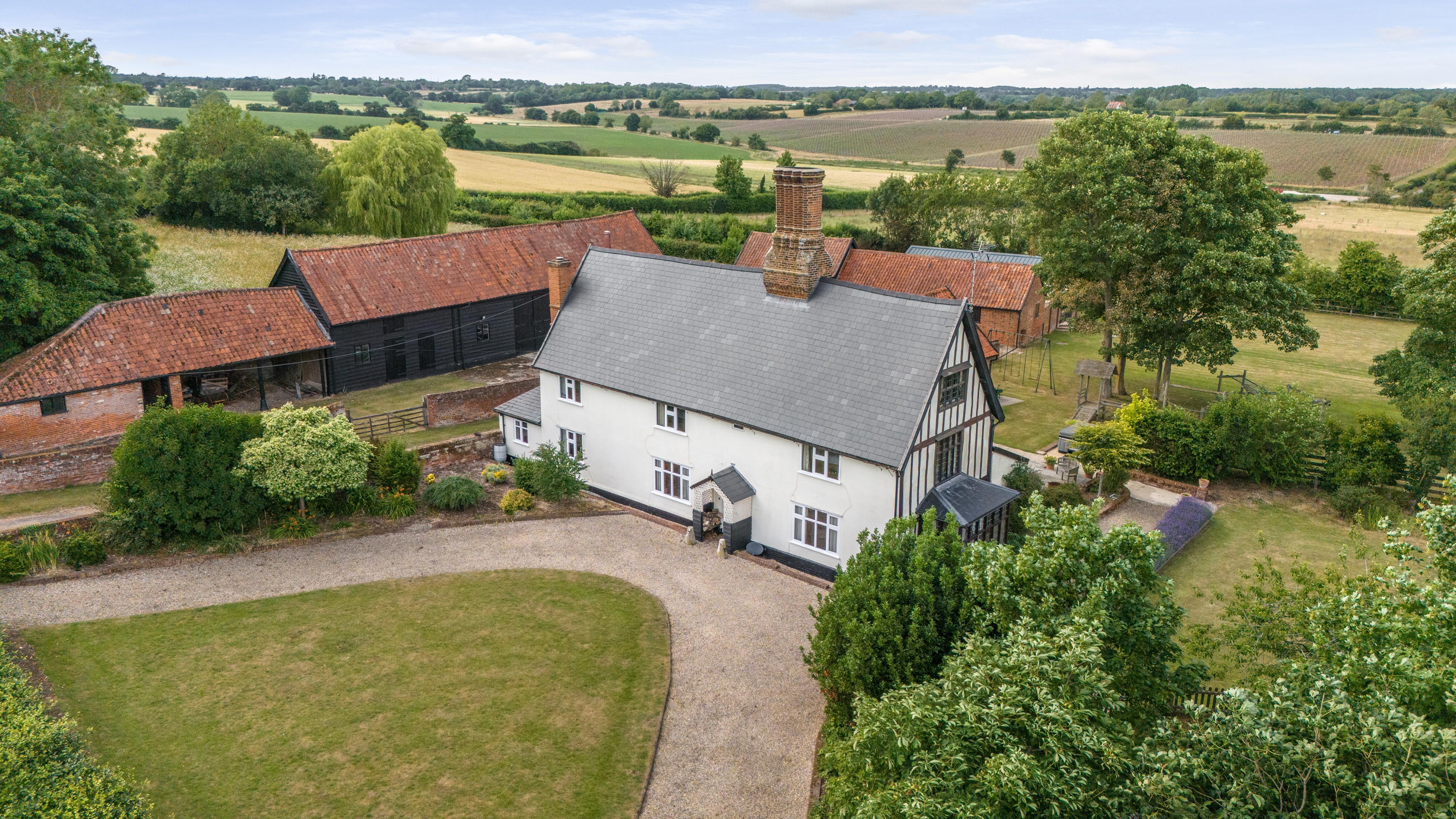
Historic Suffolk farmhouse with fine views, heated swimming pool and tennis court, set within just under seven acres in a tranquil edge of village setting.
For sale via Jackson-Stops — see more details and pictures.
Kent — £1,100,000

An elegant period house surrounded by extensive gardens and grounds including a sweep in turning circle driveway, ‘Ragstone’ buildings and a large garage with floor above.
For sale via Hobbs Parker — see more details and pictures.
Dorset — £750,000
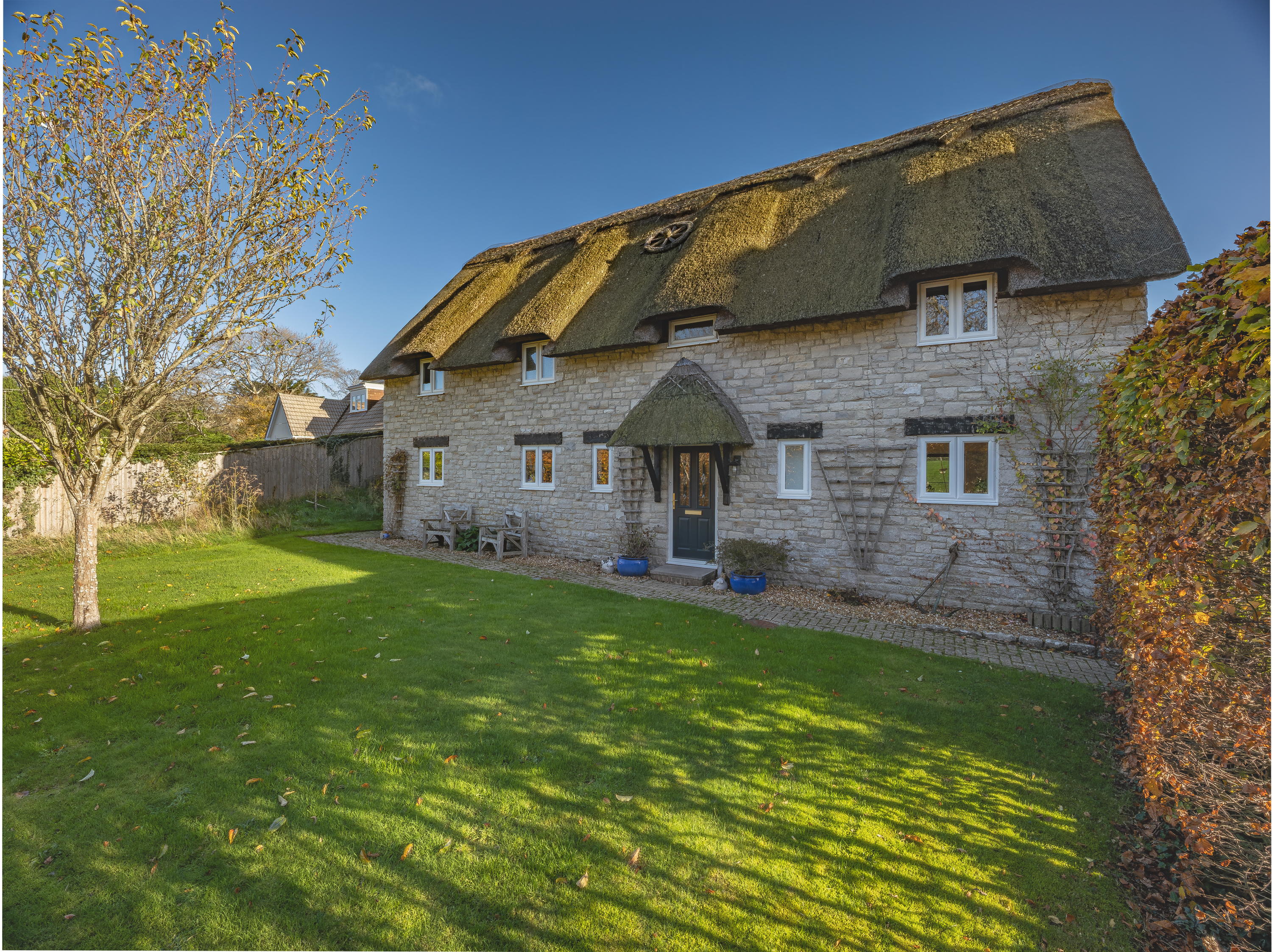
Charming thatched cottage, with light rooms, elegant stone, modern touches, and a welcoming kitchen/dining space.
For sale via DOMVS — see more details and pictures.
Shropshire — £625,000
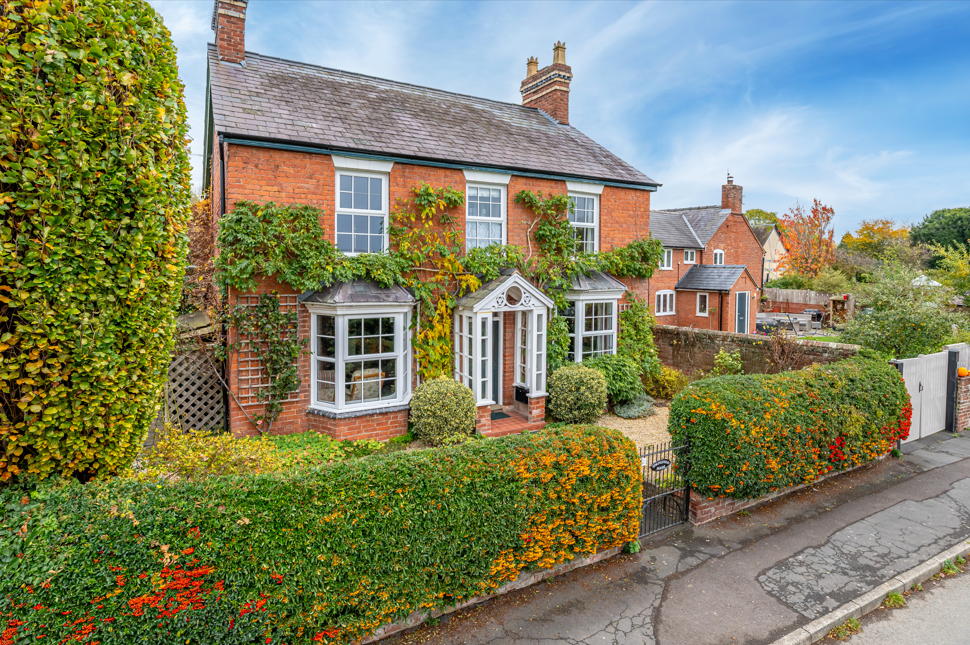
A charming four-bedroom house with a multi-purpose barn and attractive gardens, set within the heart of the sought-after village of Ashford Carbonel.
For sale via Balfours — see more details and pictures.
Devon — £4,000,000
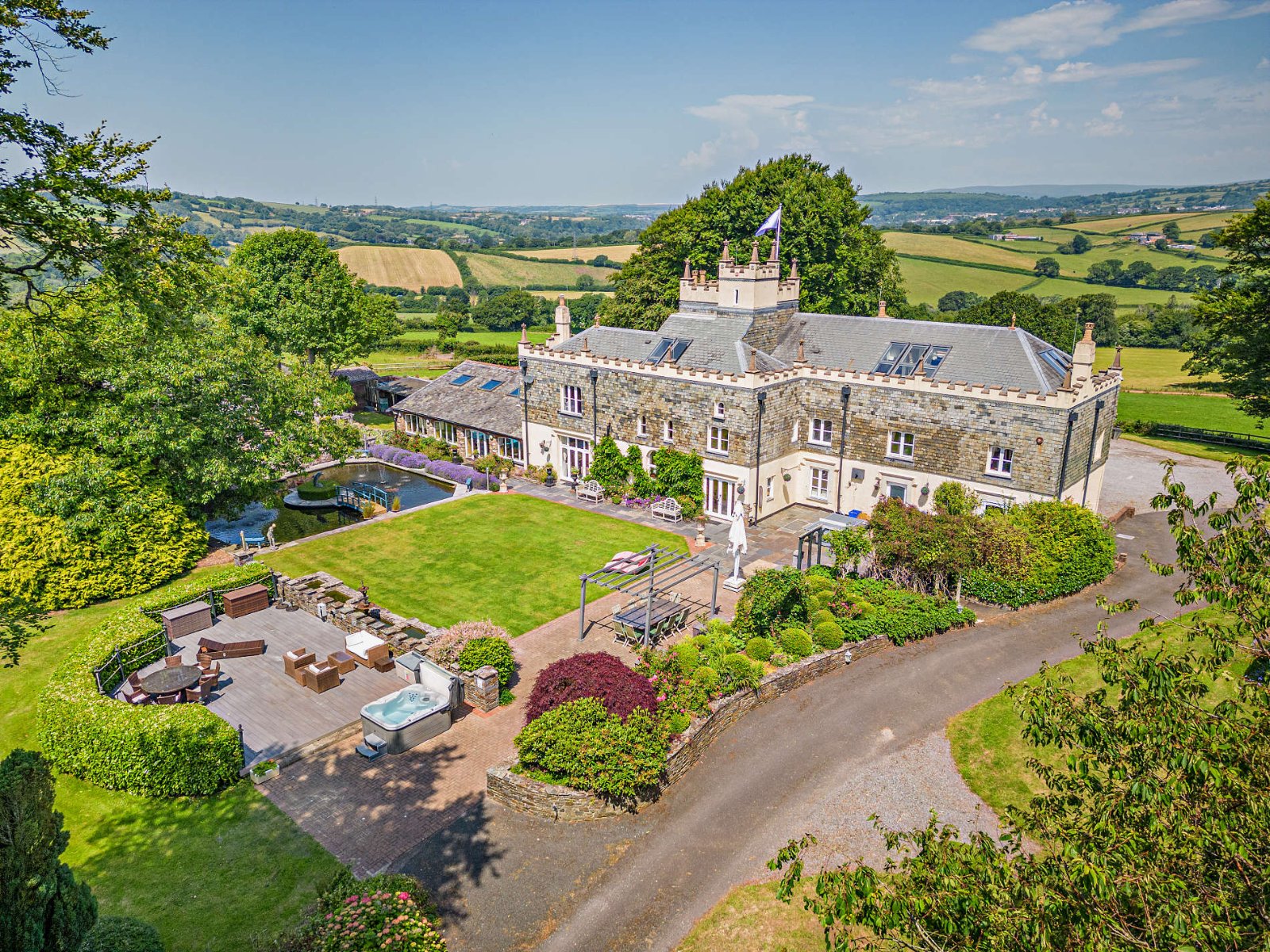
A sprawling mansion in an superb location, looking out across Dartmoor.
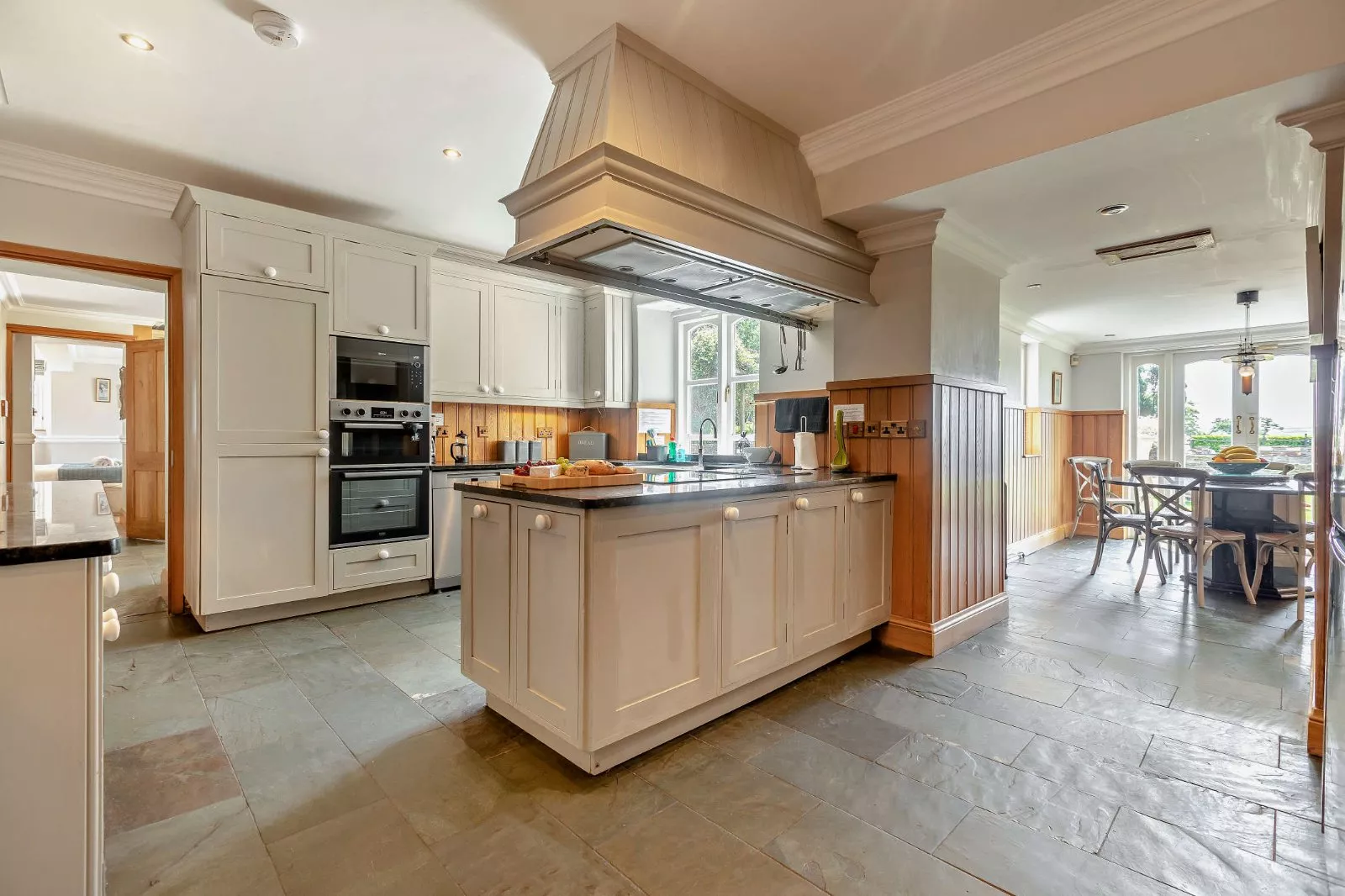
For sale via Strutt & Parker — see more details and pictures.
Kent — £3,950,000
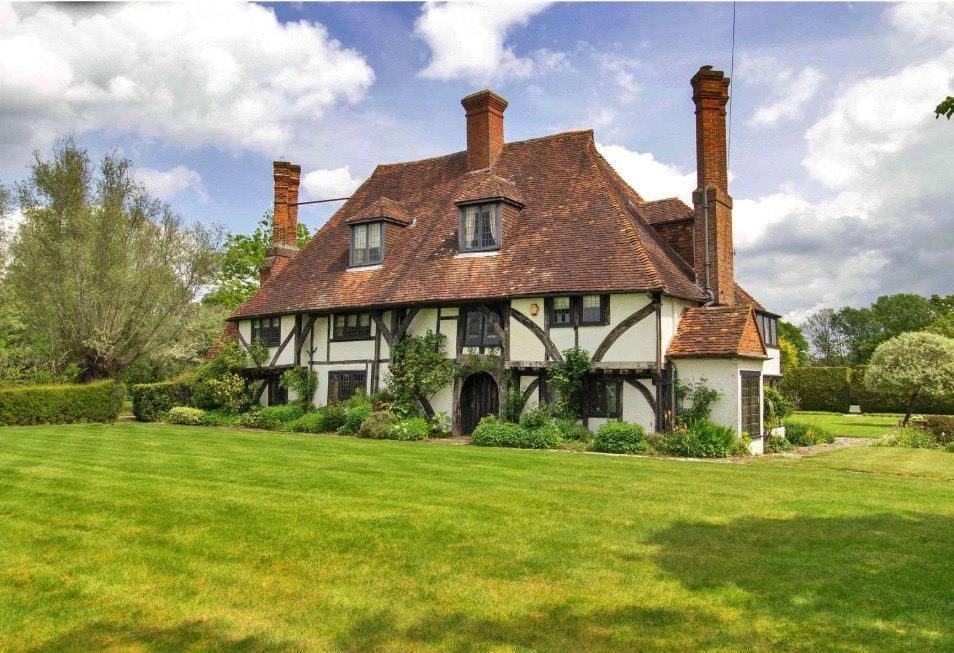
Absolutely exquisite, Grade II*-listed house in Biddenden that dates back to 1419.
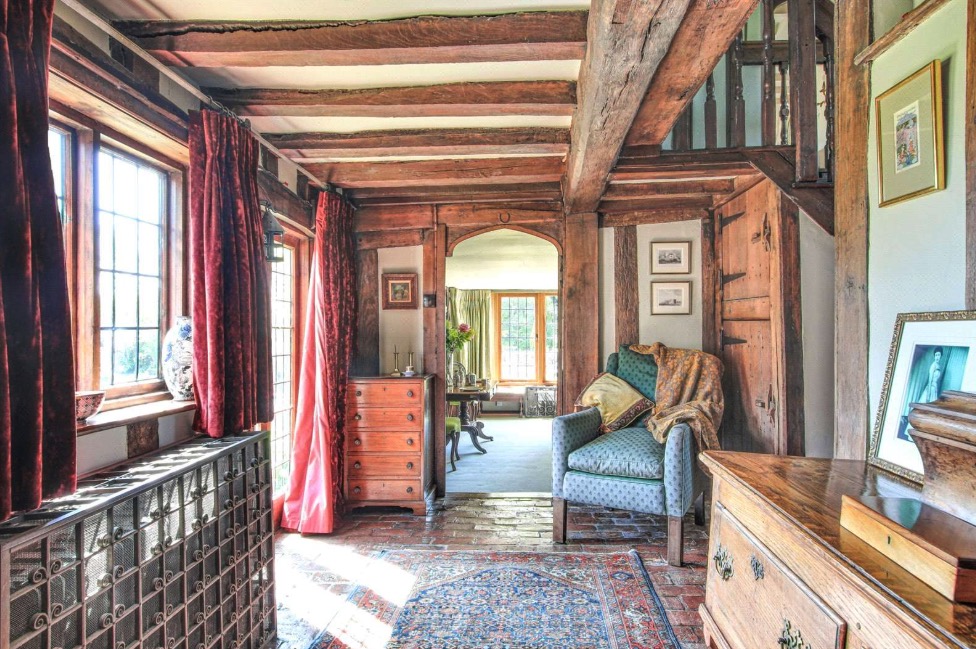
For sale via Savills — see more details and pictures.
Kent — £700,000
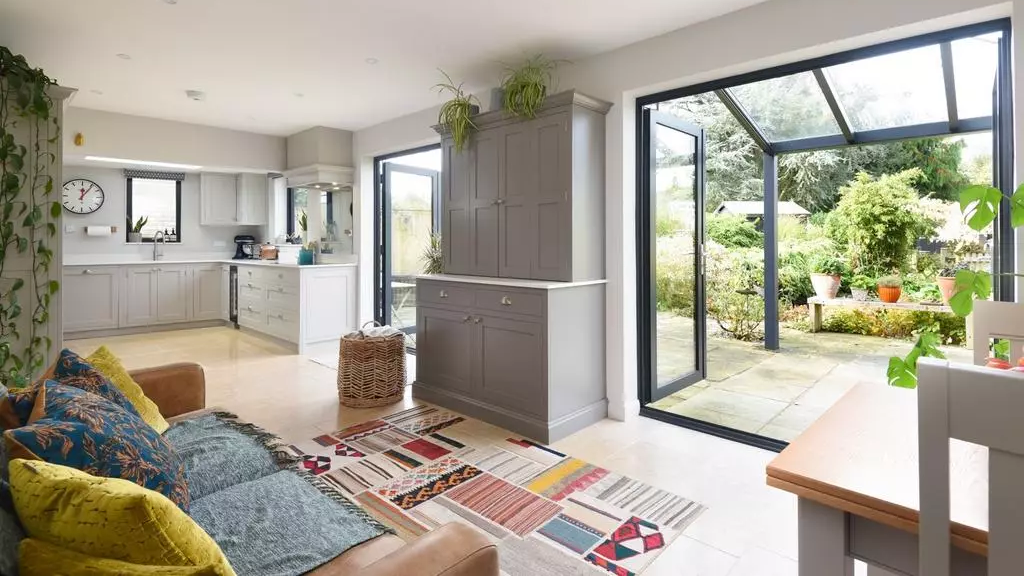
Set back from the road, this beautifully refurbished, detached family home is perfect for modern family life and entertaining.
For sale via Sandersons — see more details and pictures.
Somerset — £1,100,000

A period six-bedroom farmhouse with an array of traditional stone outbuildings, gardens and grounds of almost four acres.
For sale via Stags — see more details and pictures.
Derbyshire — £,1250,000

A fabulous four-bedroom country home set in more than eight acres, with excellent equestrian amenities and surrounded by open Staffordshire countryside.
For sale via John German — see more details and pictures.
Staffordshire — £395,000
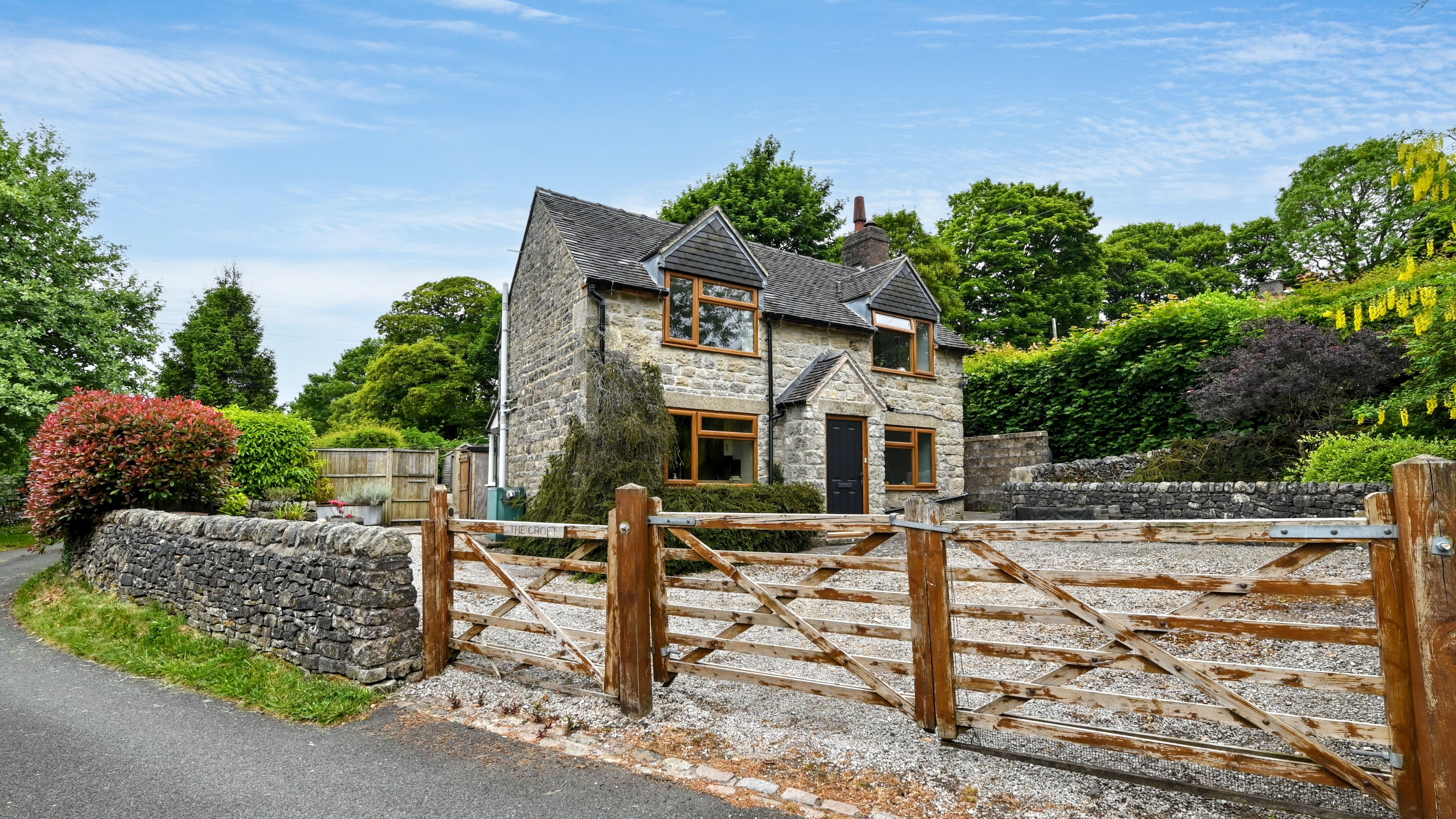
A charming three-bedroom detached stone cottage, beautifully set close to the picturesque Peak District
For sale via Bennett Samway — see more details and pictures.
Leicestershire — £1,250,000

A magnificent, Edwardian-built ‘Arts and Crafts’ house, with six bedrooms and many original period features.
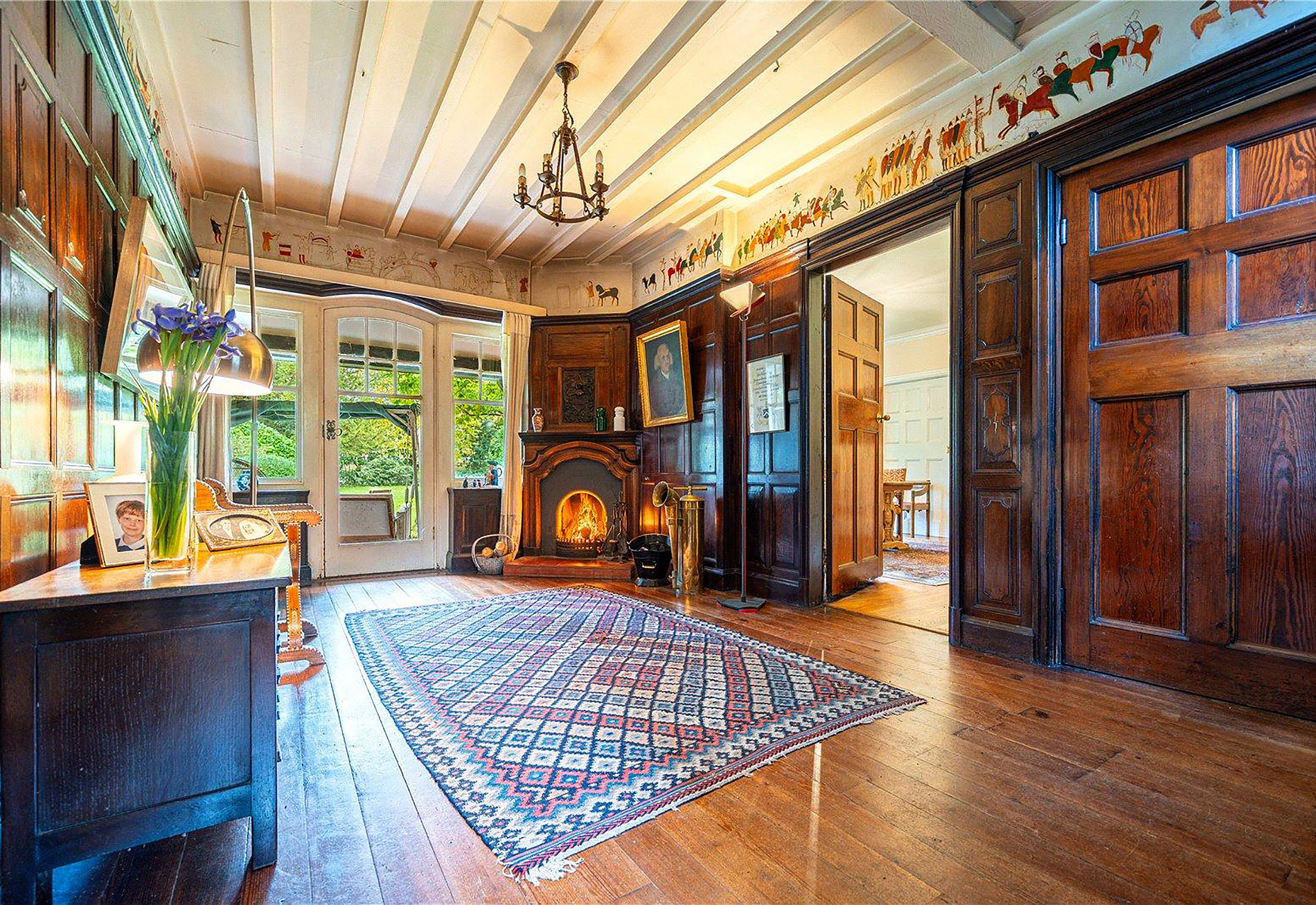
Inside, the place is just magnificent — as the pictures show — and it has a fine location in Rothley Garden Suburb.
For sale via Bentons — see more details and pictures.
Yorkshire — £1,000,000
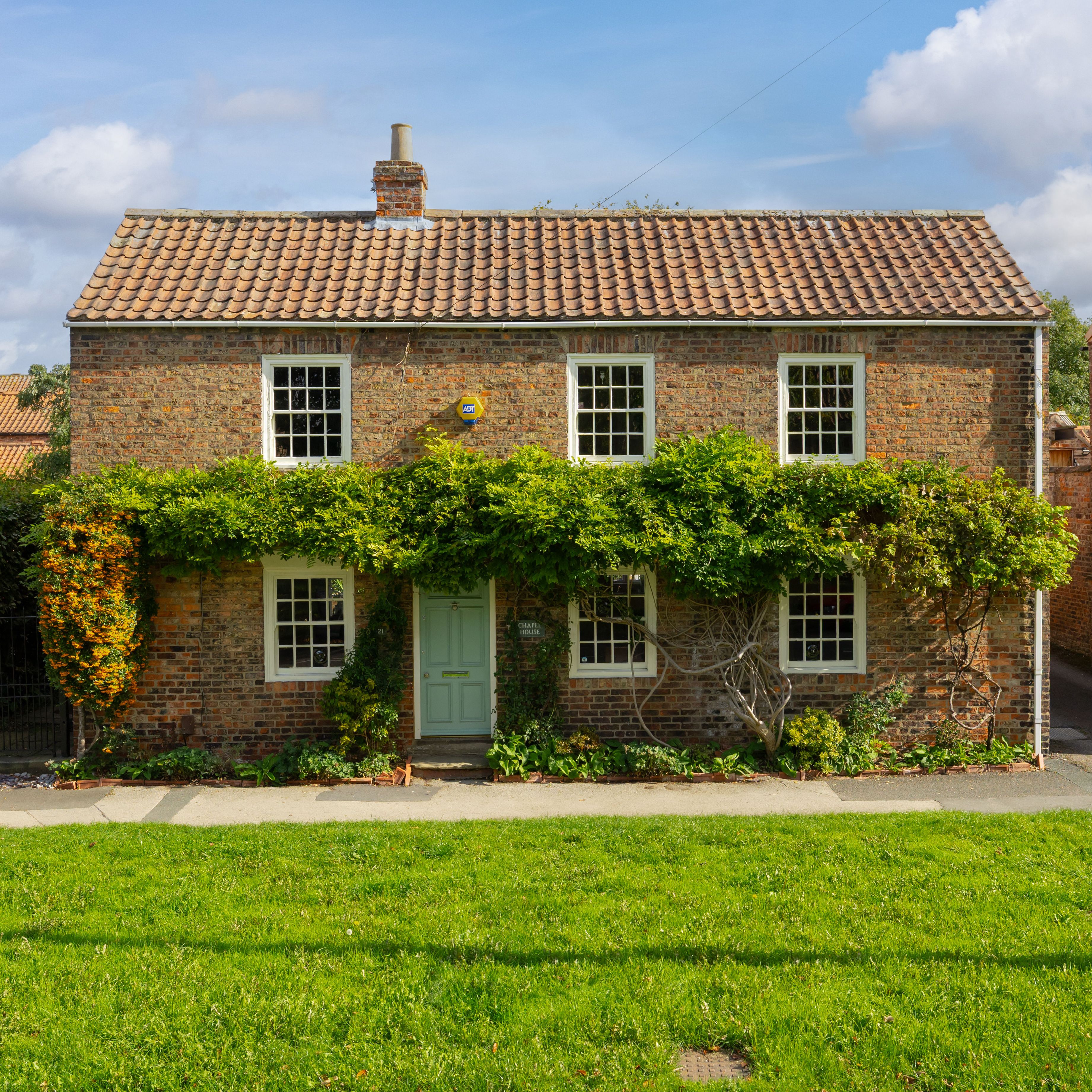
Handsome period house of nearly 2000 sq ft with garage and garden, perfectly positioned in a village on the edge of York
For sale via Blenkin & Co — see more details and pictures.
Shropshire — £625,000
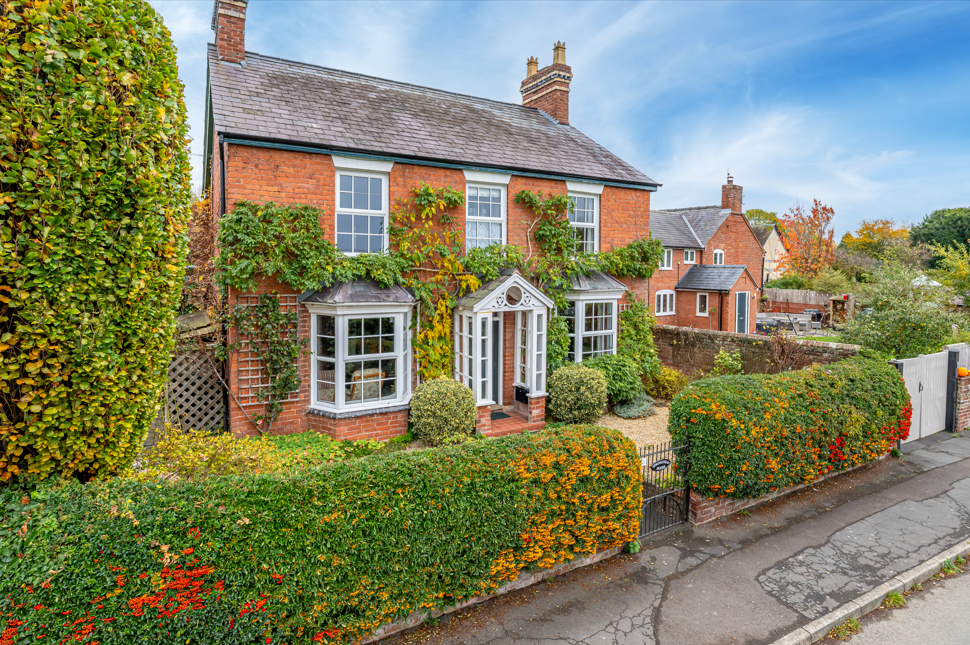
A charming four-bedroom house with a multi-purpose barn and attractive gardens, set in a prime village location.
For sale via Balfours — see more details and pictures.
Cornwall — £750,000
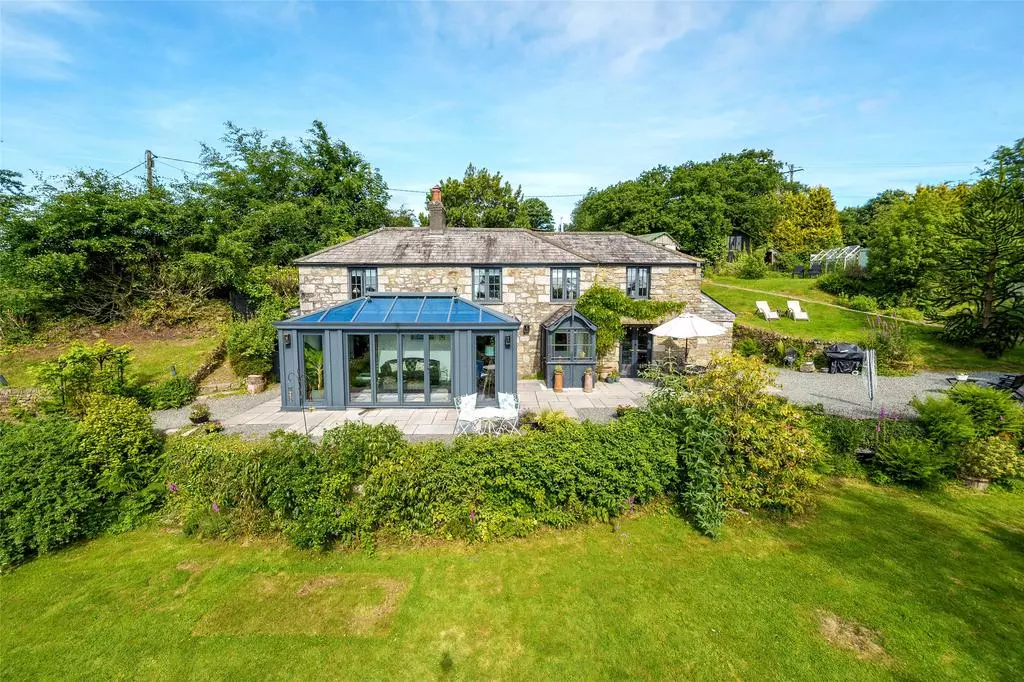
A charming home with generous accommodation, set in over an acre with several outbuildings with planning permission.
For sale via Fine & Country — see more details and pictures.
Fife — £695,000

A substantial farmhouse with river views. Enjoys three reception rooms and five bedrooms plus outbuilding for extra space.
For sale via Galbraith — see more details and pictures.
Suffolk — £1.995 million
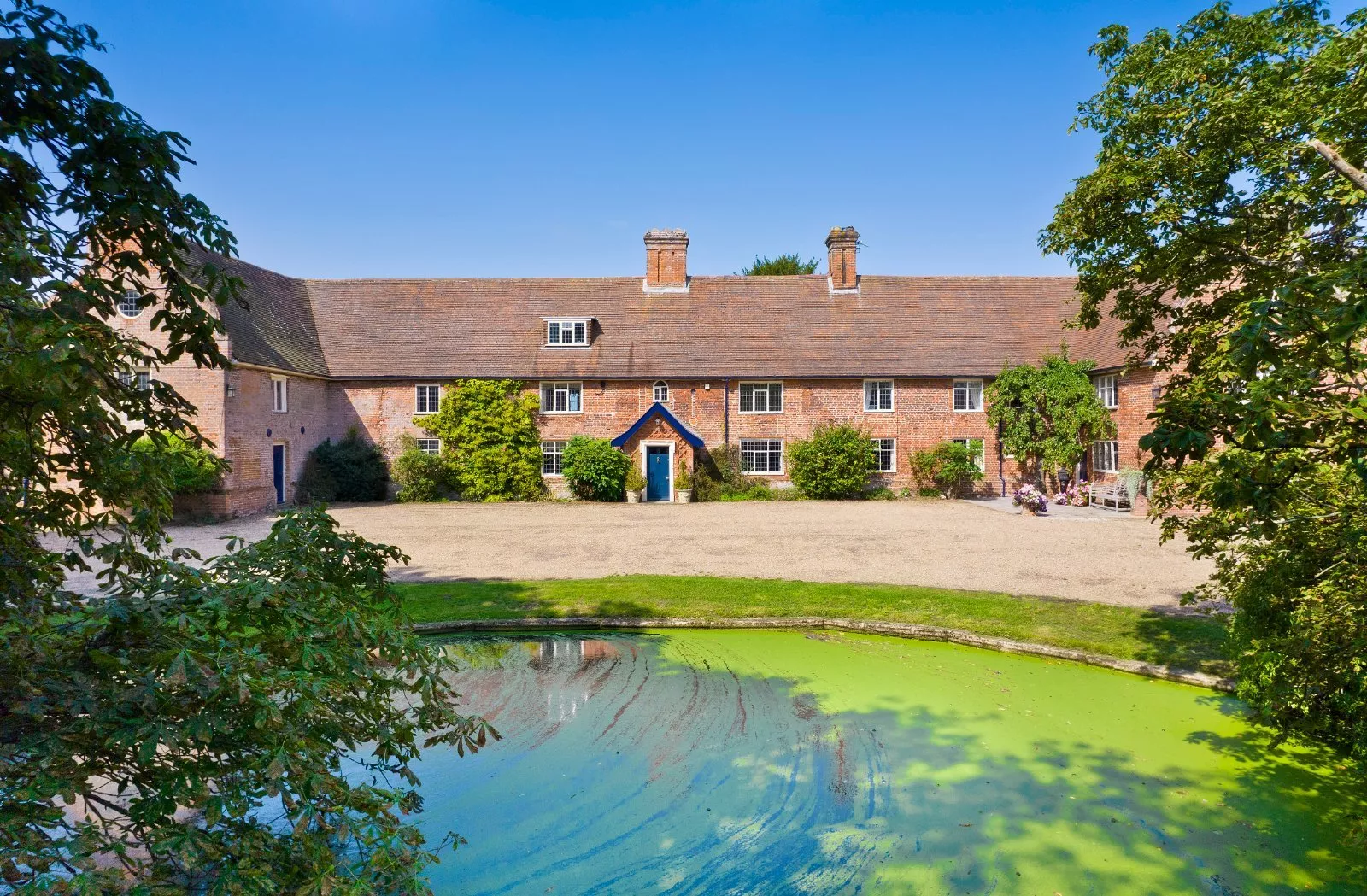
Sitting at the end of a long, tree-lined drive, this grand country home is packed with period charm — we particularly love the dining room with its timbered ceiling and inglenook fireplace.
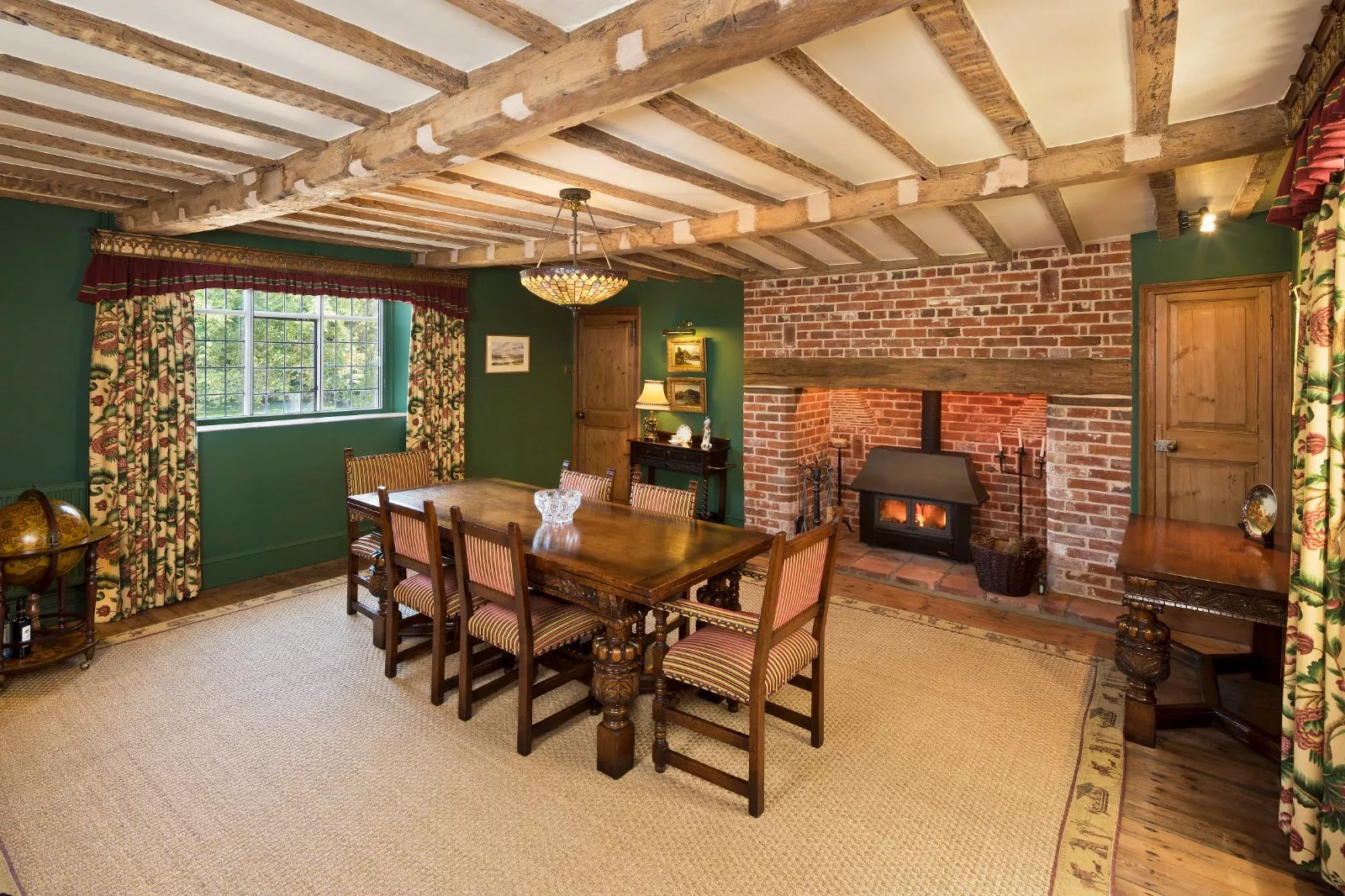
For sale via Strutt & Parker — see more details and pictures.
Somerset — £795,000
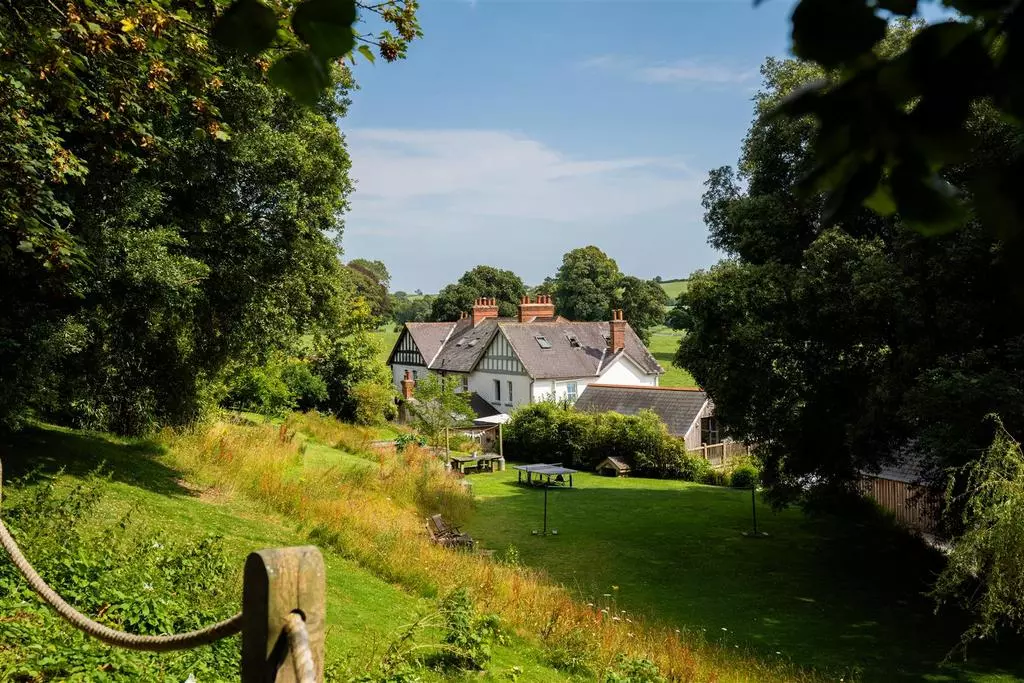
A stylishly restored cottage in a popular village with three reception rooms, kitchen/breakfast room, three double beds and a pretty courtyard.
For sale via Stags — see more details and pictures.
Devon — £1,680,000
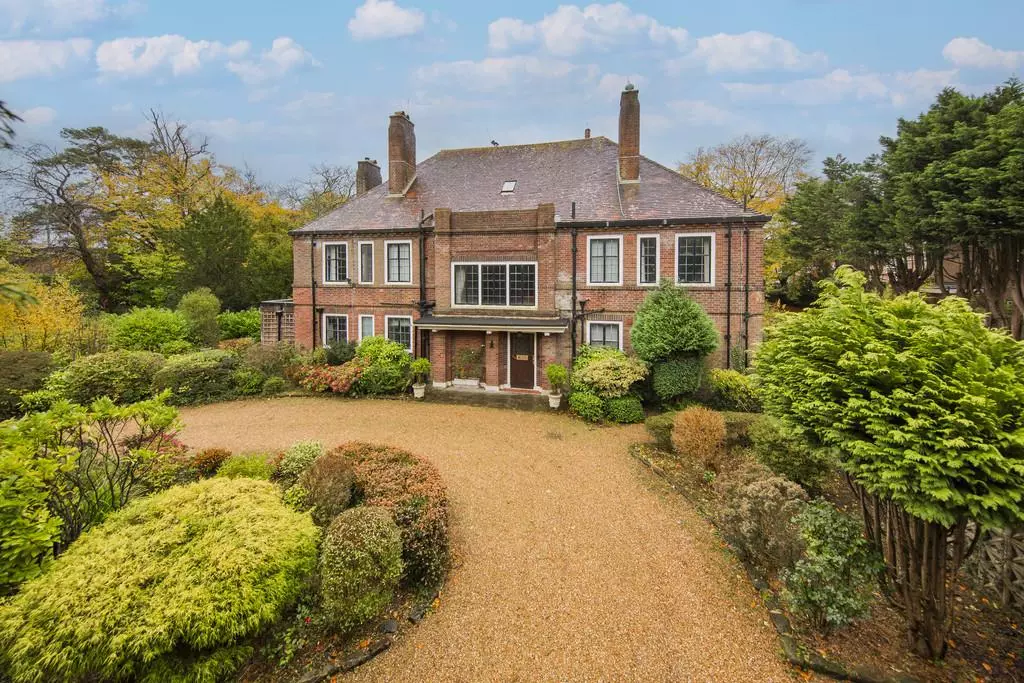
A highly appealing Edwardian property with two letting cottages set in a large plot with an attractive outlook over open fields.
For sale via Wood and Pilcher — see more details and pictures.
Yorkshire — £1,750,000
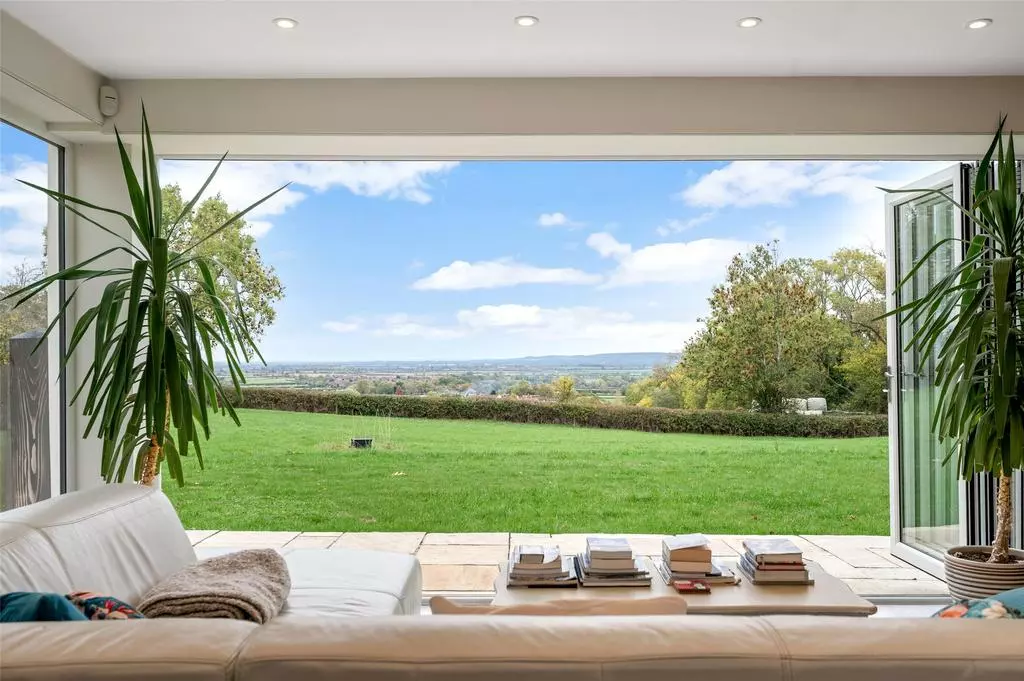
How's that for a view from the living room? This superb Georgian home, recently restored, comes with outbuildings and two-thirds of an acre of gardens and grounds.
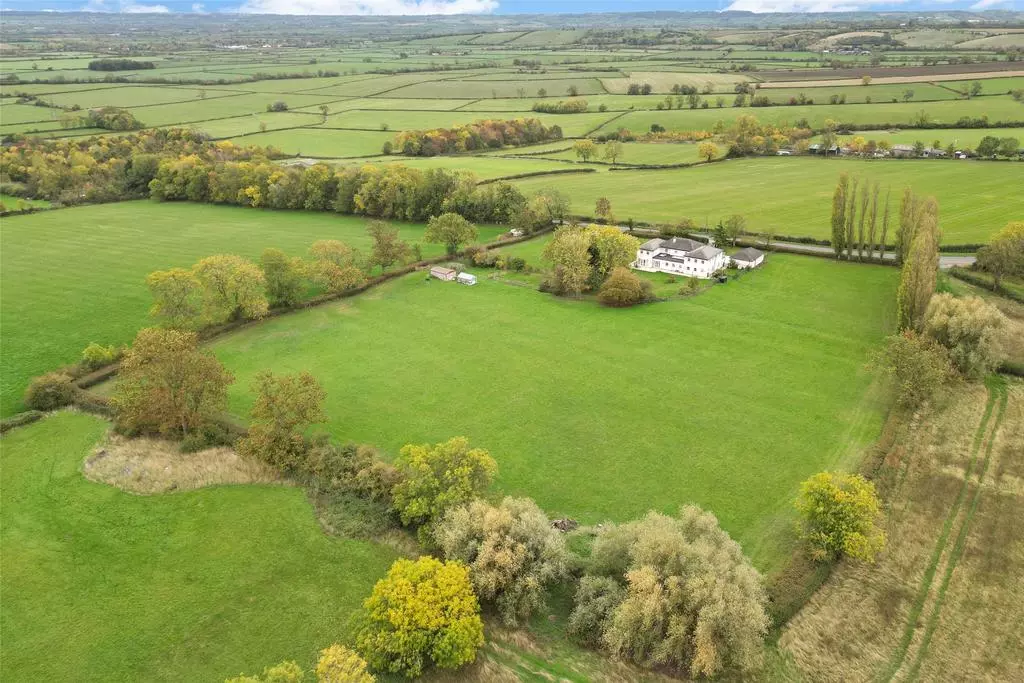
For sale via Bentons — see more details and pictures.
Kent — £1,250,000

A 4-5 bedroom detached home with period features, requiring full refurbishment, set in large gardens with scope to extend (STP).
For sale via Blenkin & Co — see more details and pictures.
Gloucestershire — £1,400,000
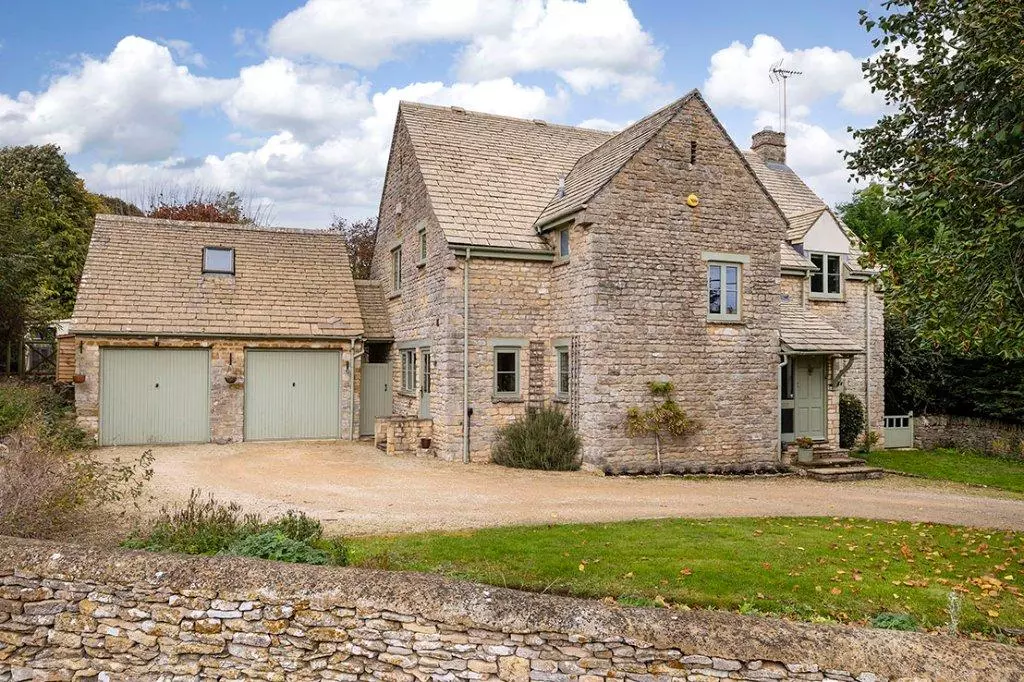
A spacious four bedroom detached Cotswold stone family home, with pretty gardens, double garage and parking.

For sale via Hayman Joyce — see more details and pictures.
Kent — £895,000
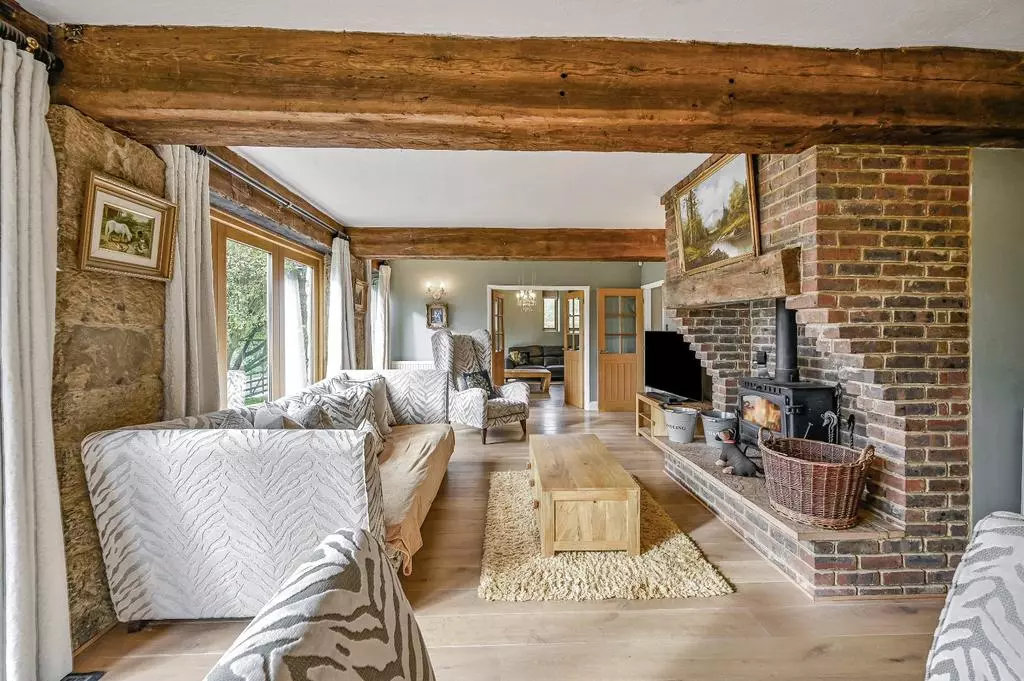
Stunning barn conversion within an impressive mews enjoying countryside views across protected farmland.
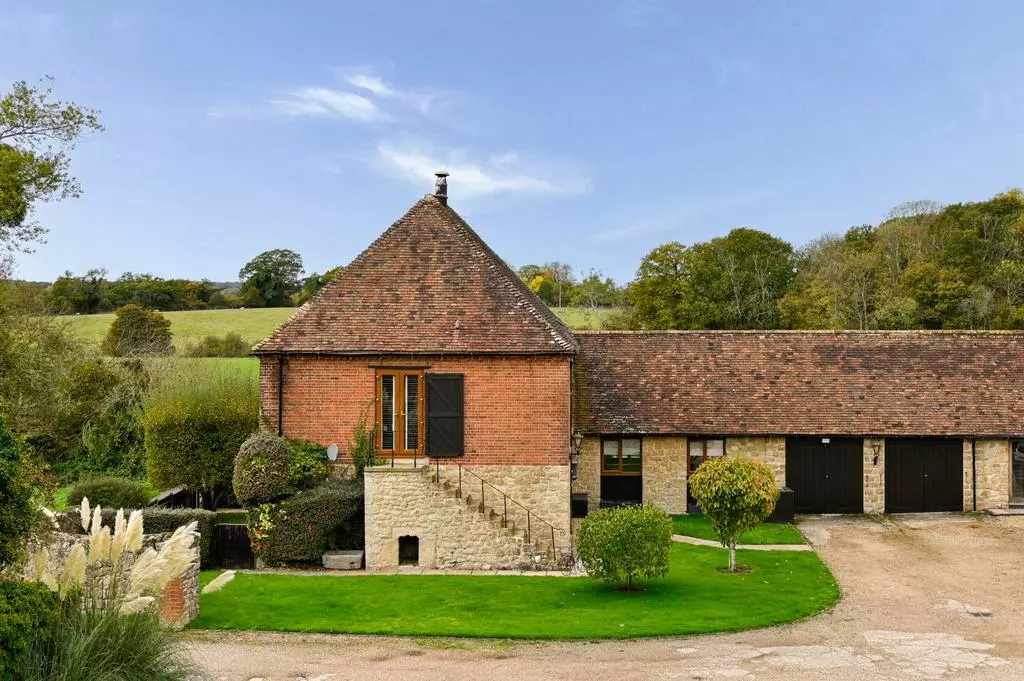
For sale via Hobbs Parker — see more details and pictures.
Somerset — £650,000

A gorgeous three-bedroom house in the fine village of Wedmore.

For sale via Sandersons — see more details and pictures.
West Sussex — £3.75 million
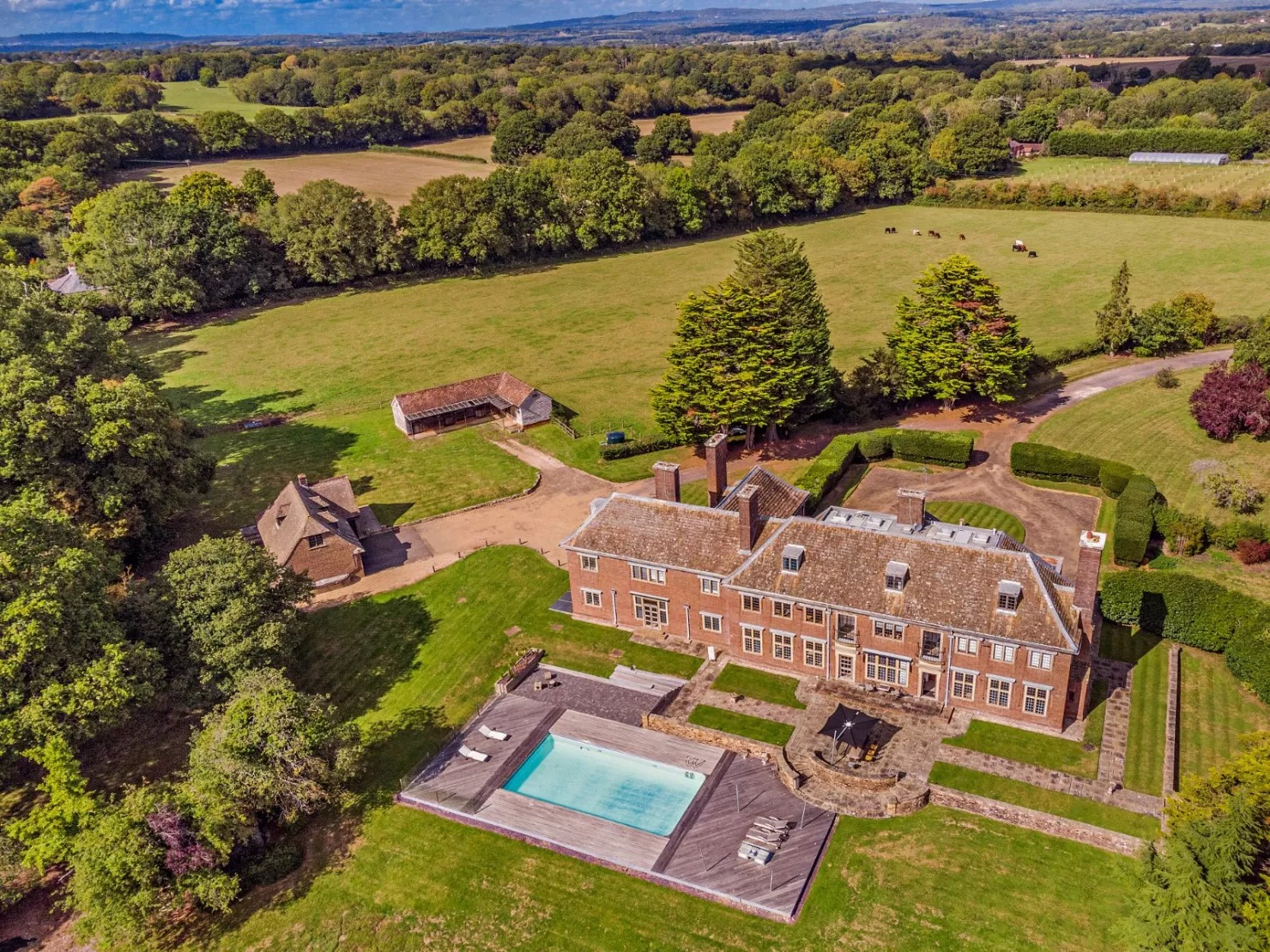
This might be the most interesting mix of styles we've seen all year: a mansion on the South Downs that blends 1930s Art Deco with traditional country house elements, and plenty of modern twists. A real one-off, and a place built for fun: there's a pool, tennis court, stables and more, while it's an easy walk into the village.
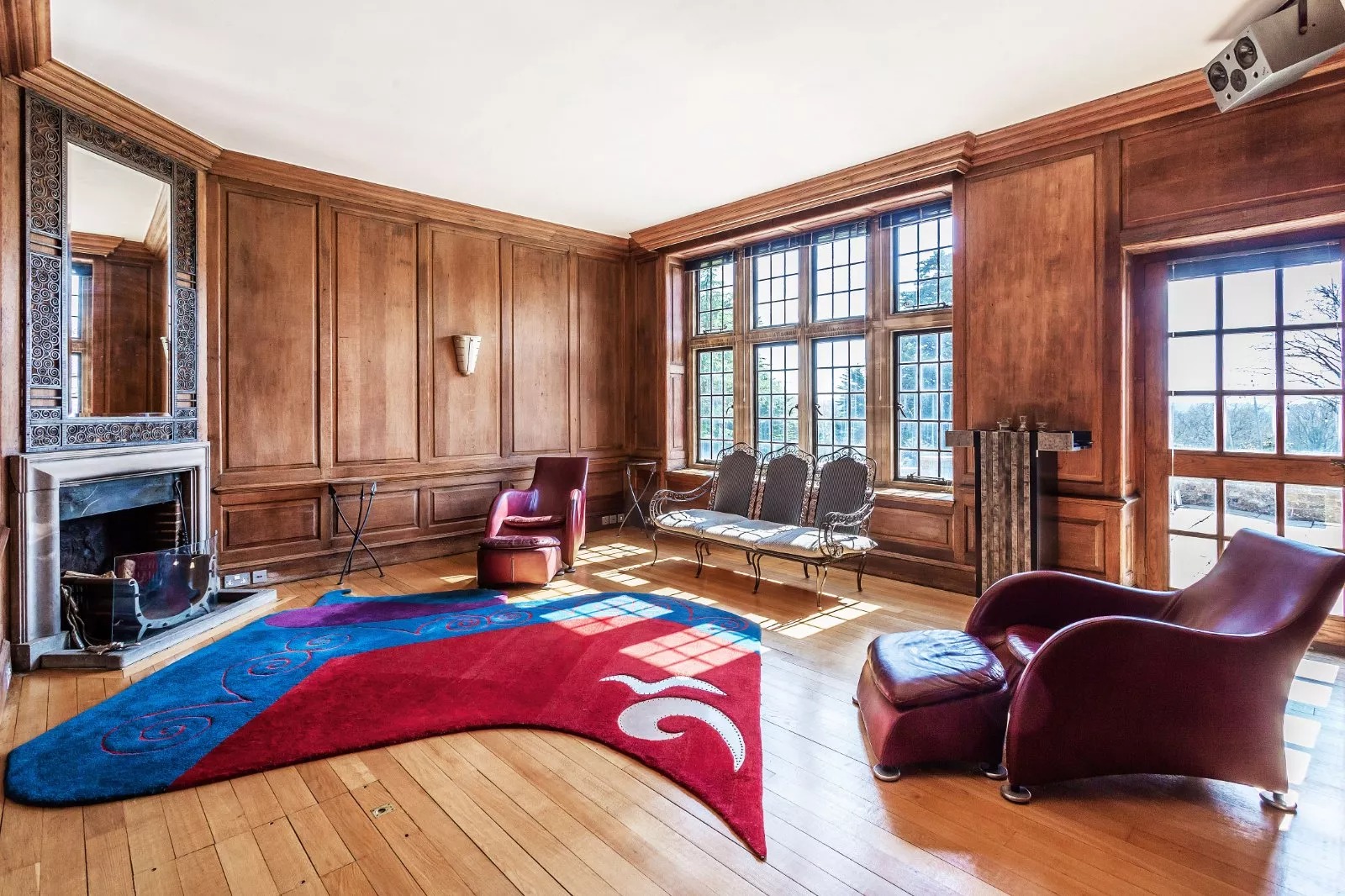
For sale via Strutt & Parker — see more details and pictures.
Cornwall — £3.5 million
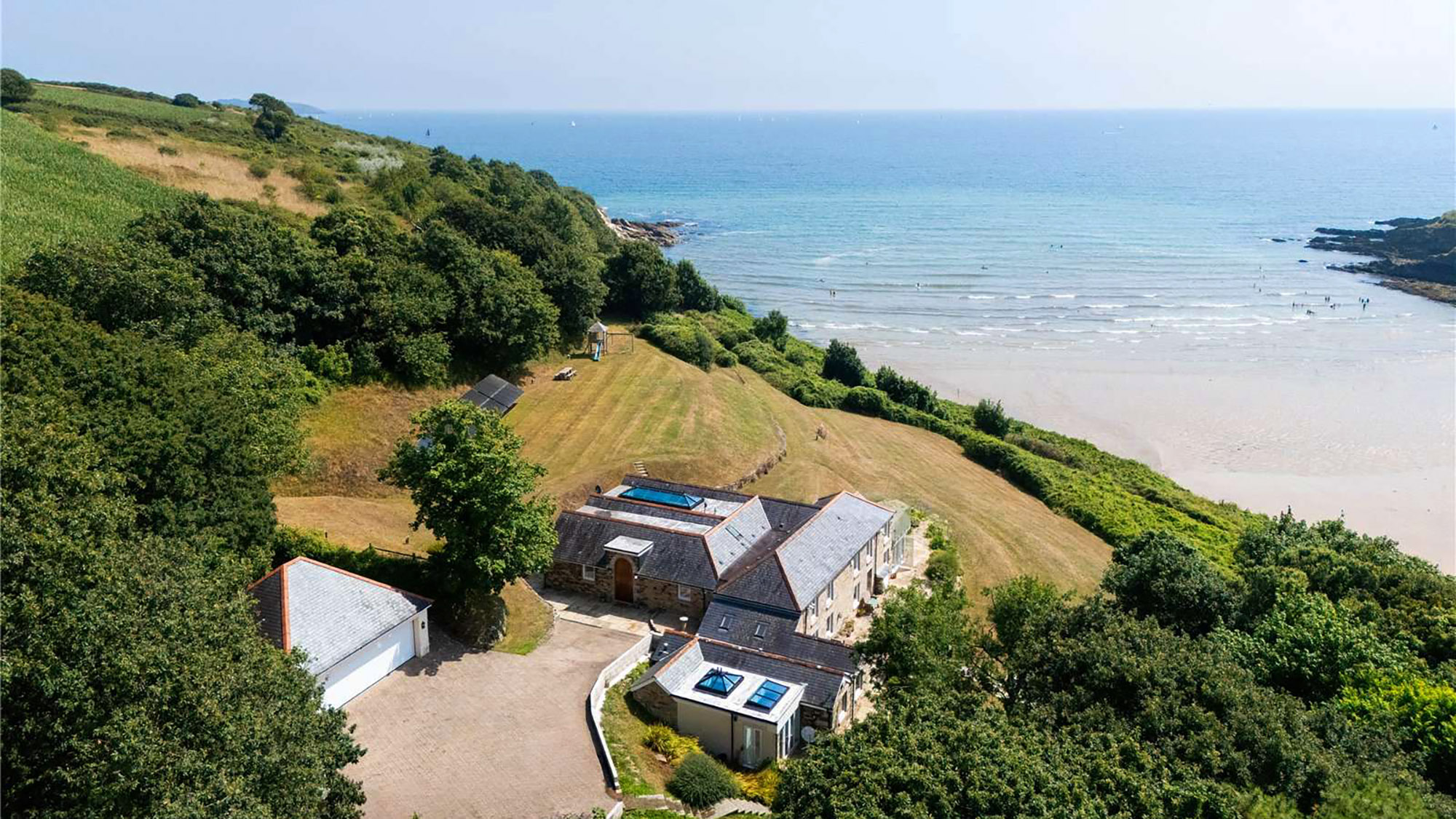
On a glorious and secluded sandy cove on the south coast of Cornwall, this really is a seaside dream home: a 4,300sq ft main home with spectacular views, plus a Georgian cottage and 11 acres.
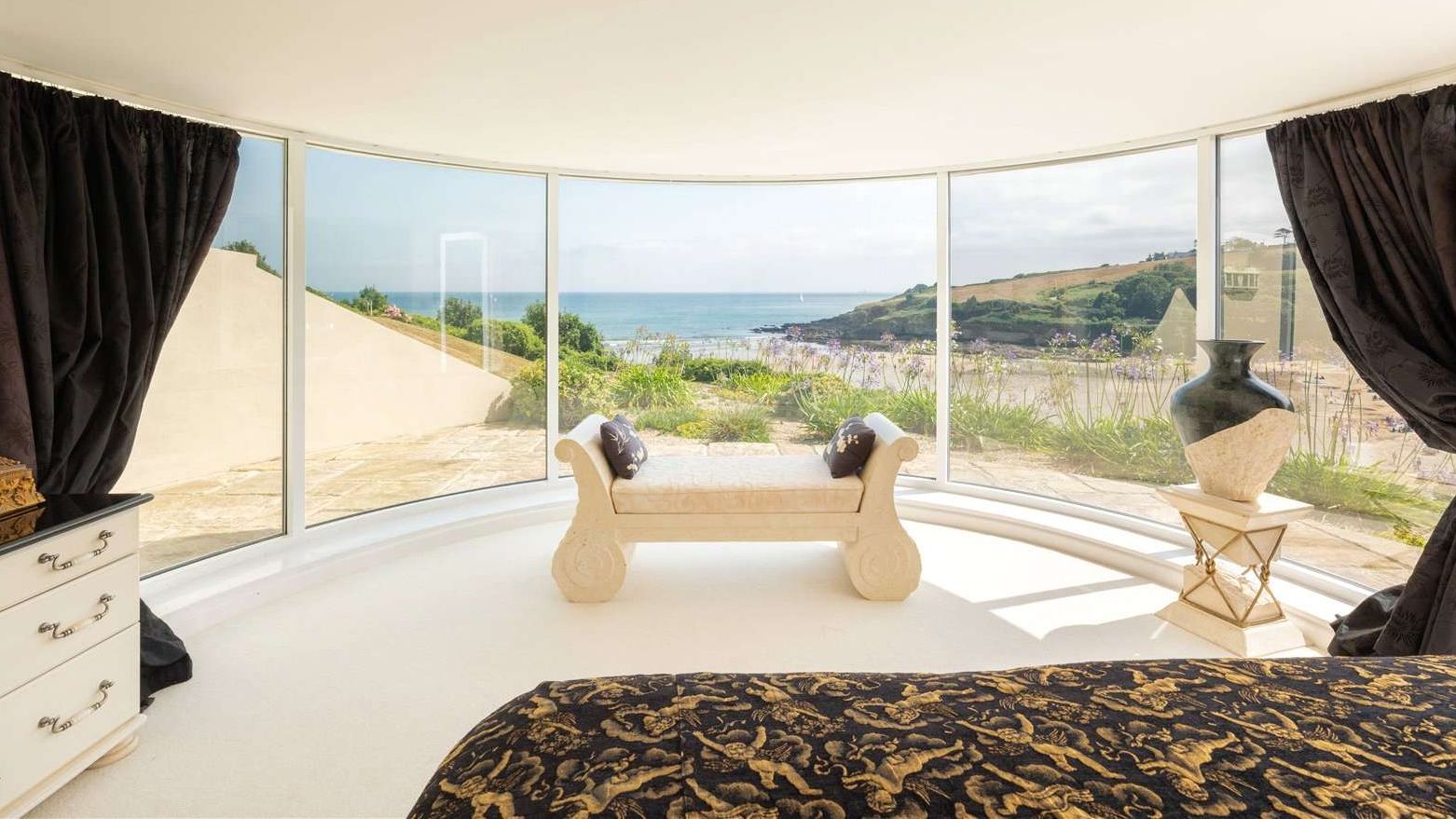
For sale via Savills — see more details and pictures.
Herefordshire — £2.75 million
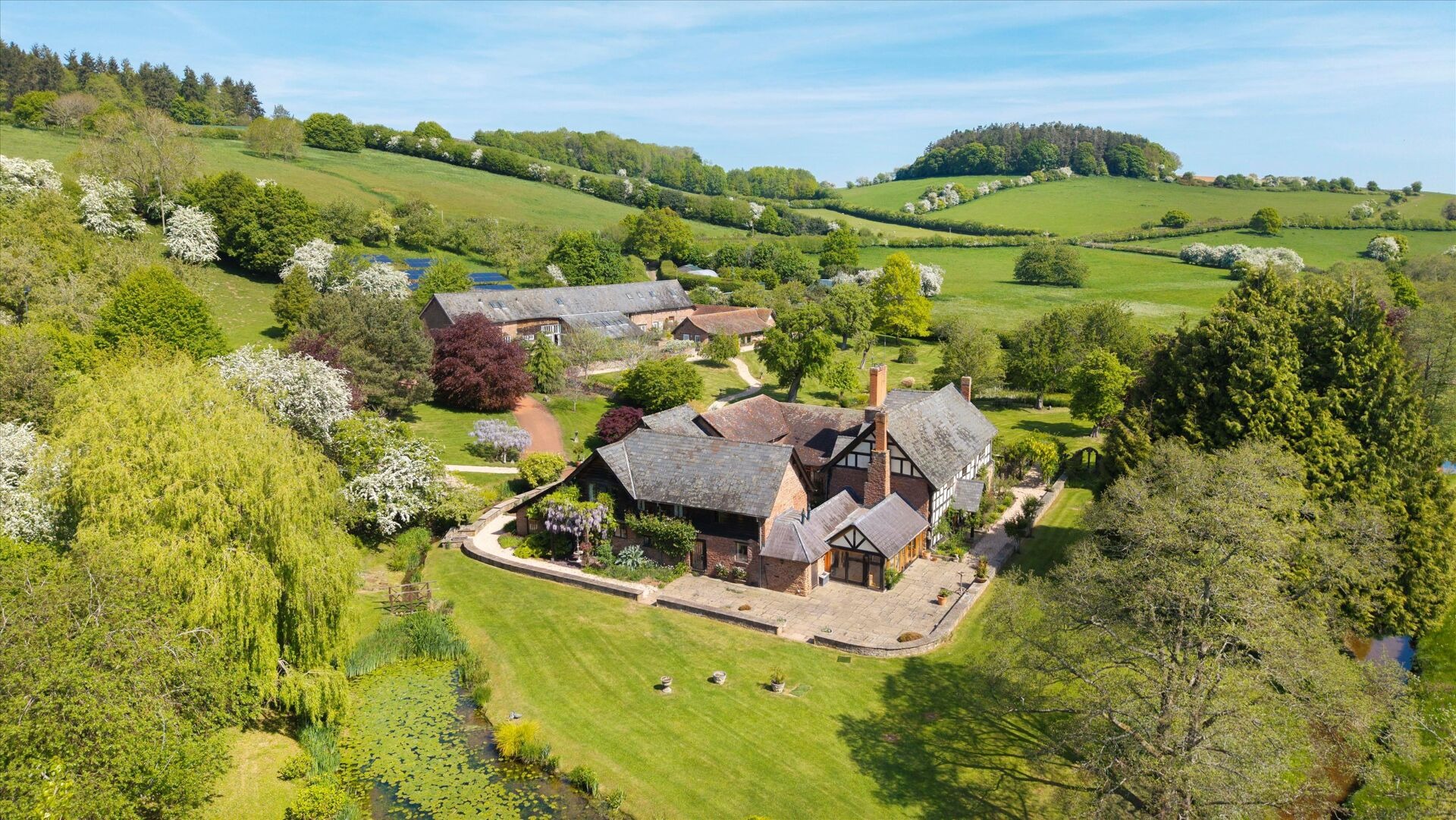
What was once a monastic abbey, and then a derelict farmstead, is now a spectacular home with almost 1,000 years of history to tell, and 26 acres of charming countryside as its setting.
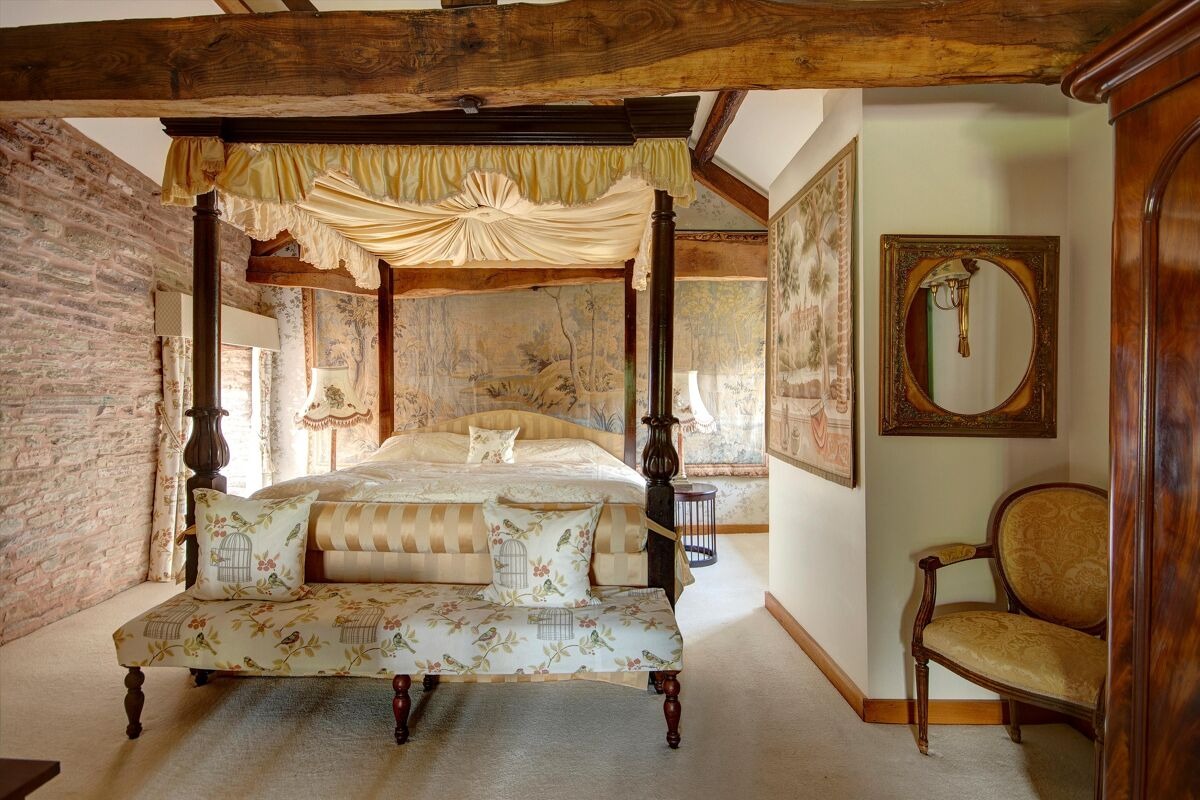
For sale via Knight Frank — see more details and pictures.
Buckinghamshire — £3 million

From afar you'd think this had been here centuries, but it's deceptively new — it was actually only built in the 1960s. It's a country home with five bedrooms, a separate three-bedroom cottage, a gym in a separate outbuilding and much more. Plus it's just half an hour on the train to Central London.
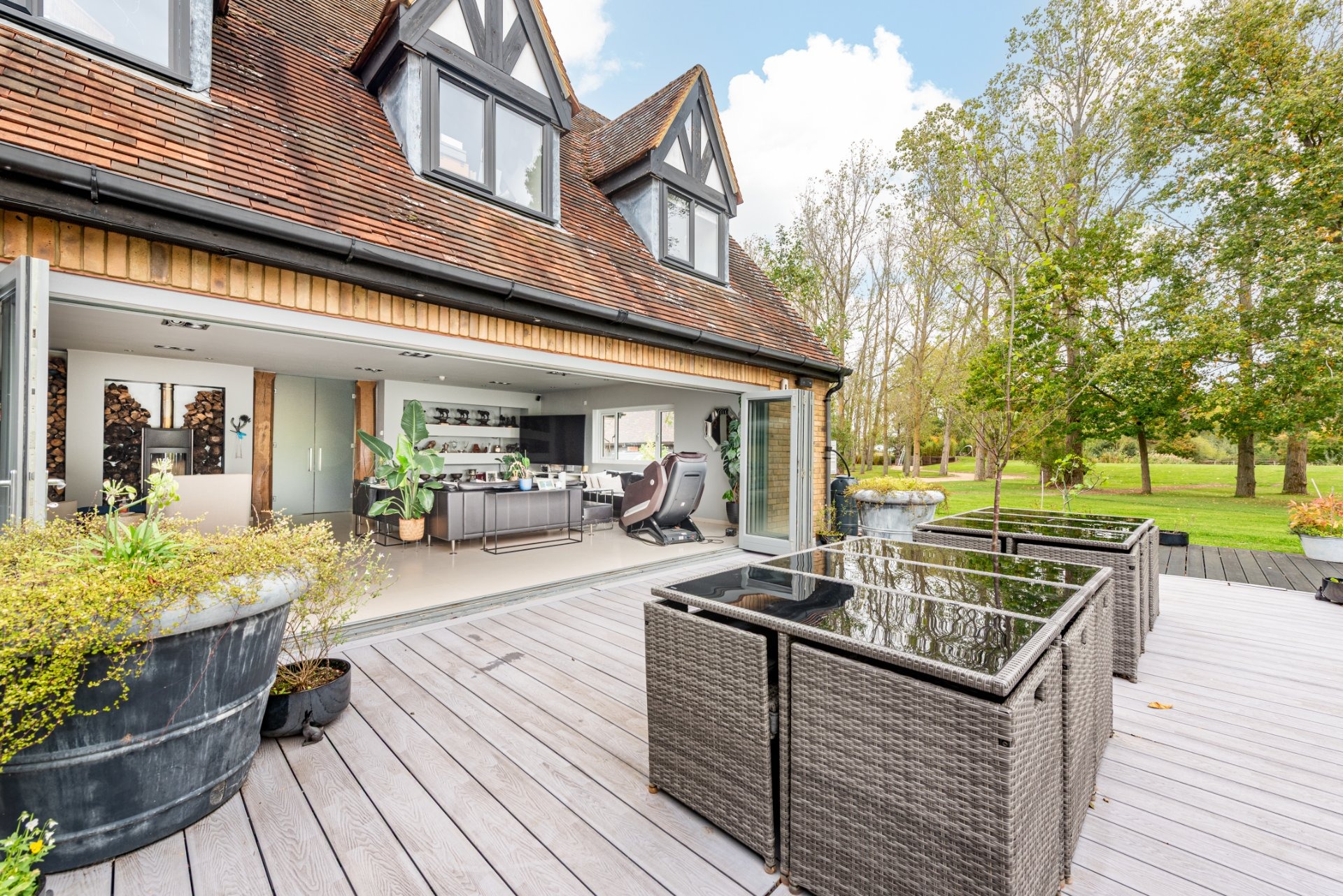
For sale via Michael Graham — see more details and pictures.
Hampshire — £2.5 million
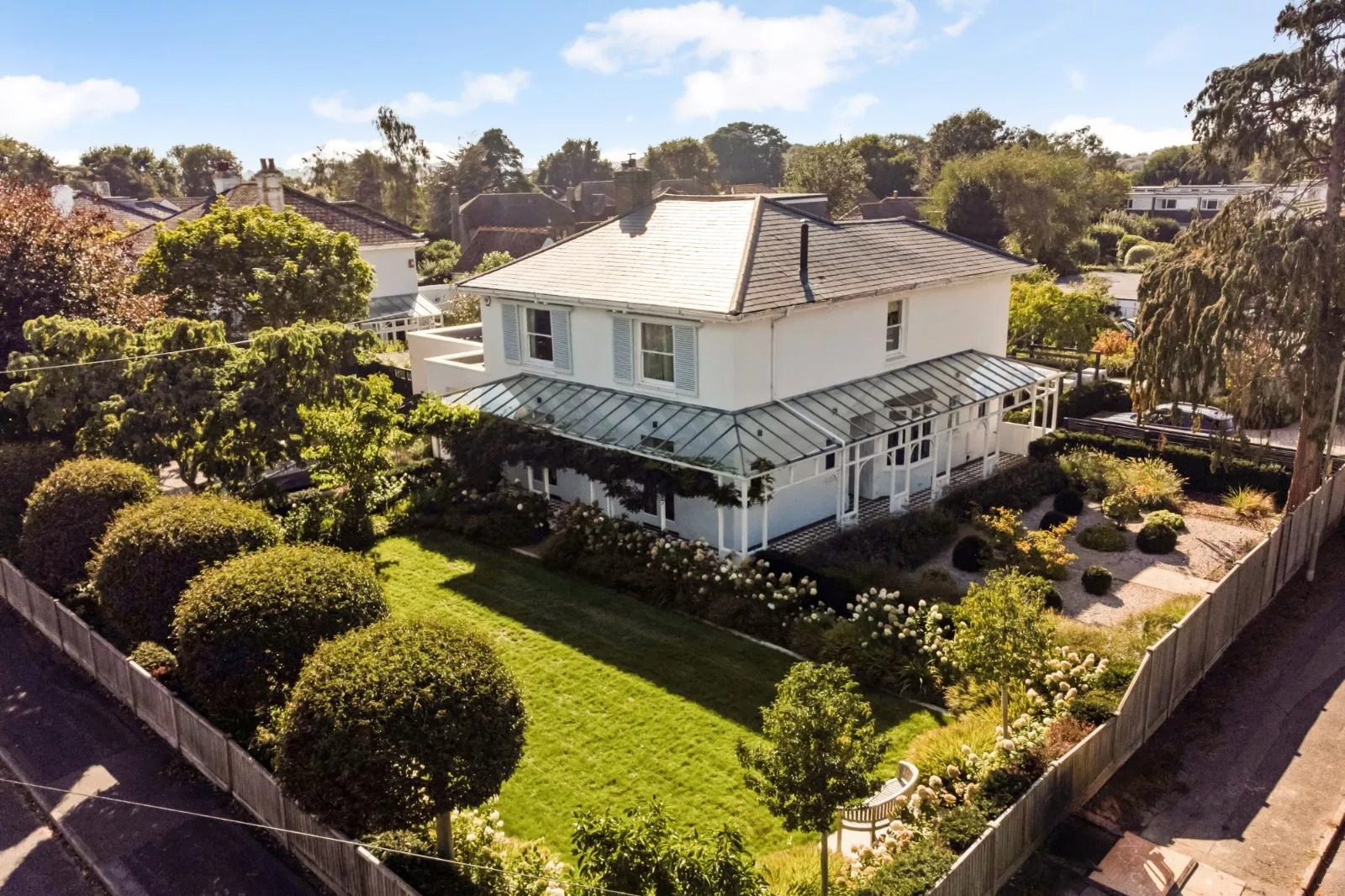
In the lovely market town of Emsworth, 100 yards or so from the waterfront of Chichester Harbour, this 3,496 sq ft house has been brilliantly remodelled to make a superb kitchen/dining/living space at the heart of the house.

For sale via Strutt & Parker — see more details and pictures.
North Yorkshire — £2.25 million
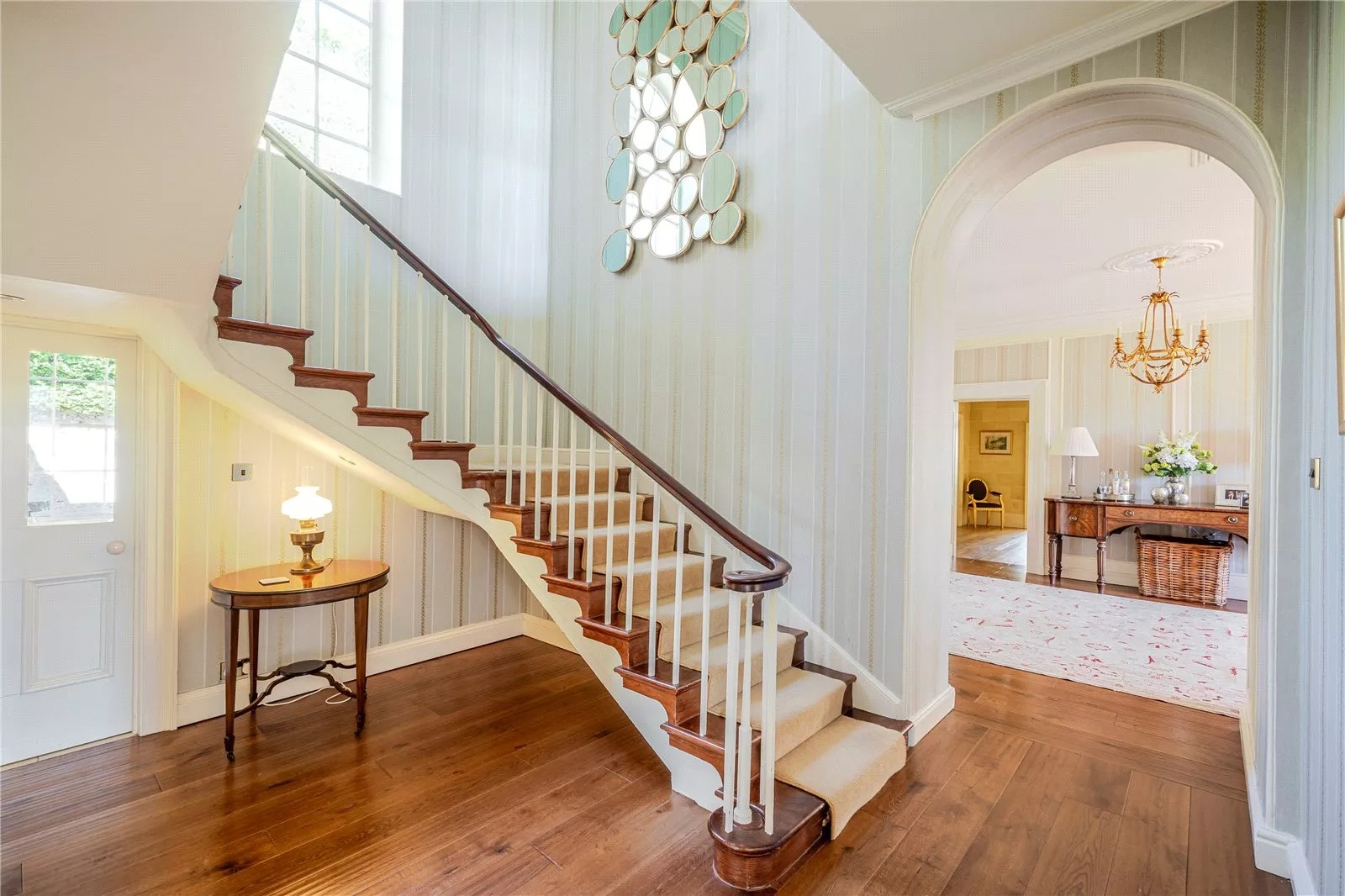
Ten bedrooms and almost 9,000sq ft of space is on offer at this secluded and elegant country house, set a few miles from Leyburn.

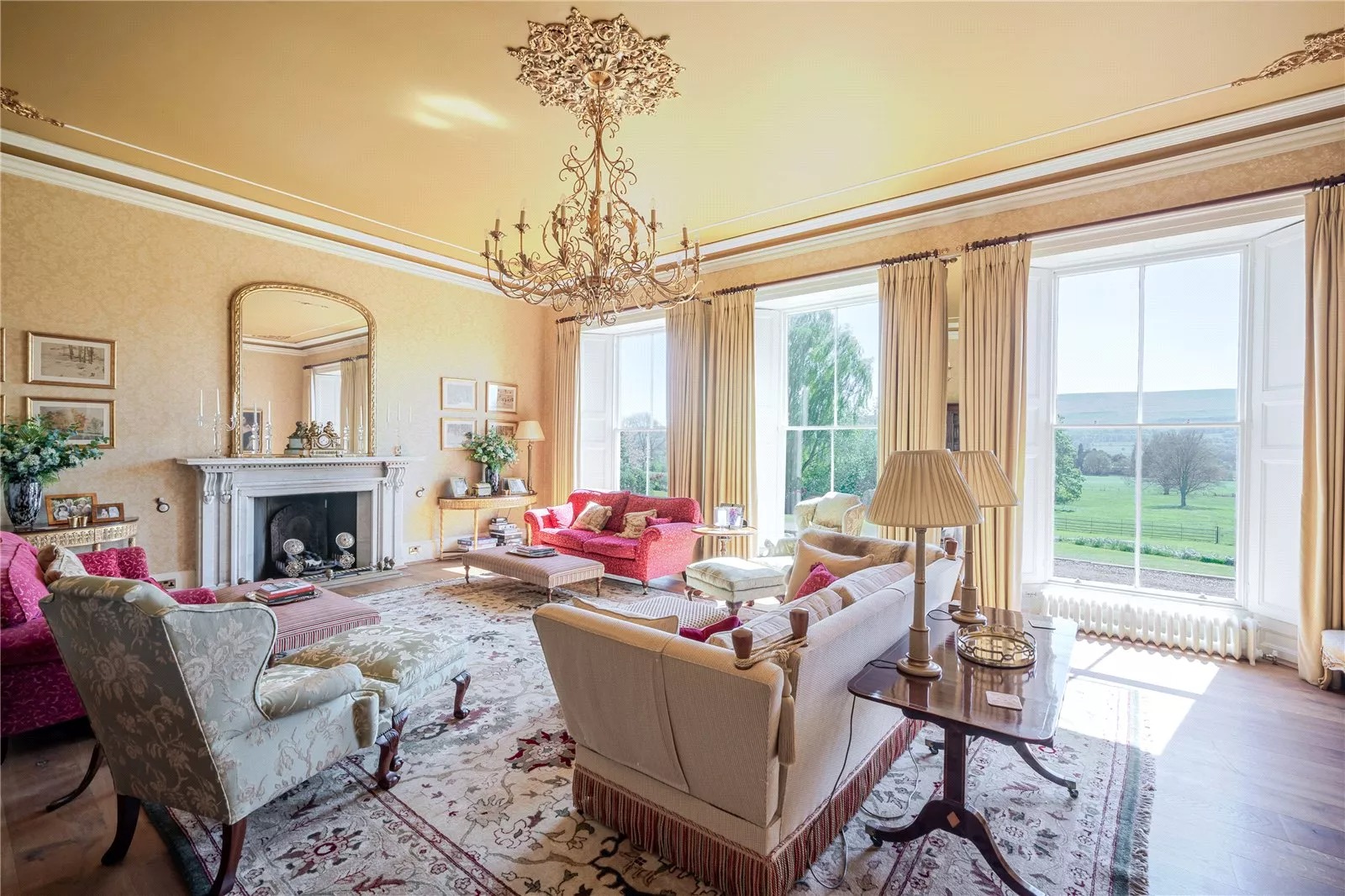
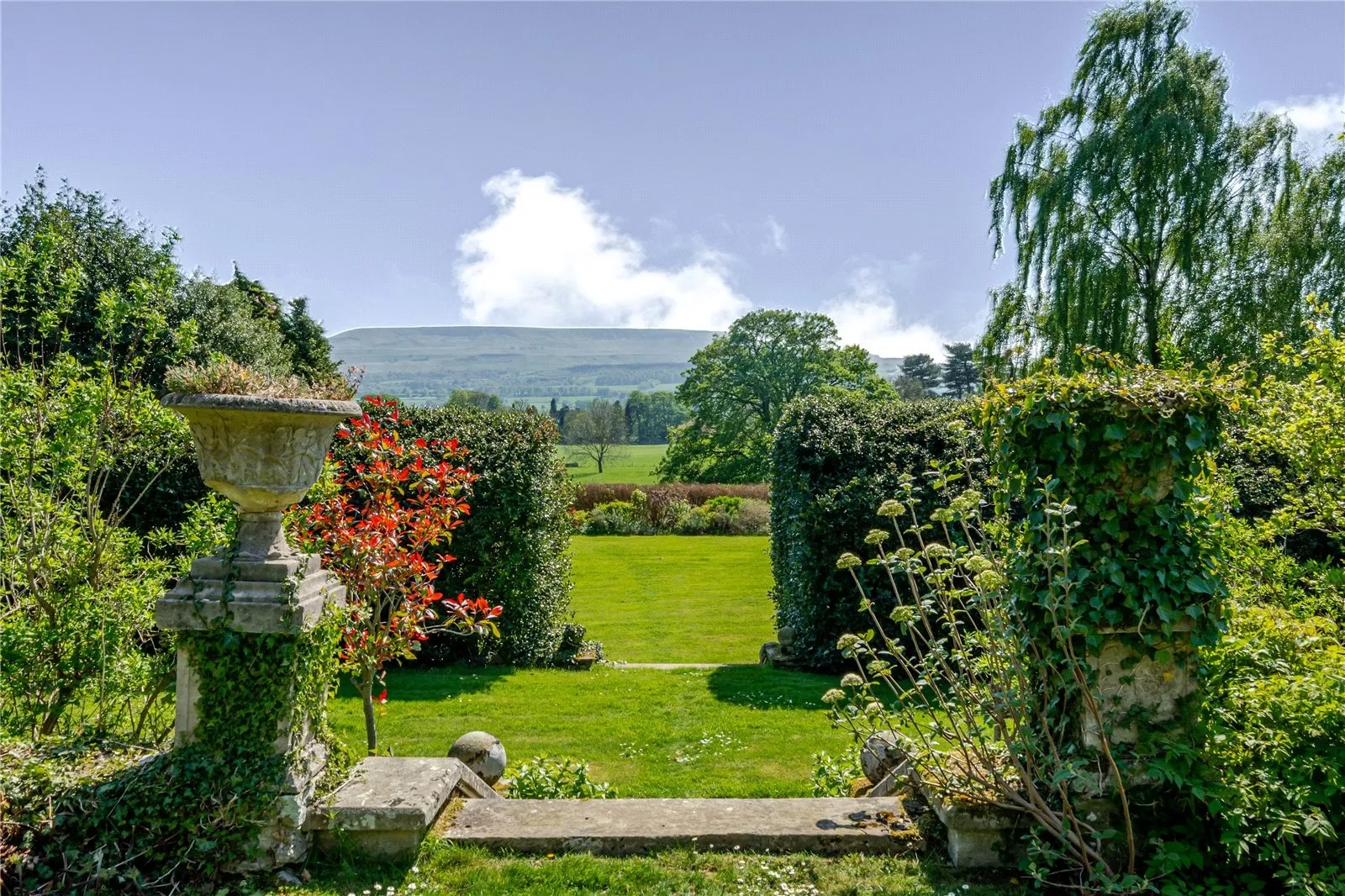
For sale via Strutt & Parker — see more details and pictures.
Hampshire — £7.95 million

Proof that a new country house can be as charming as an old one — and with far less of the maintenance problems. This Georgian-style house set in 22 acres near Odiham has six bedrooms, glorious views and permission to erect a separate, four-bedroom cottage.
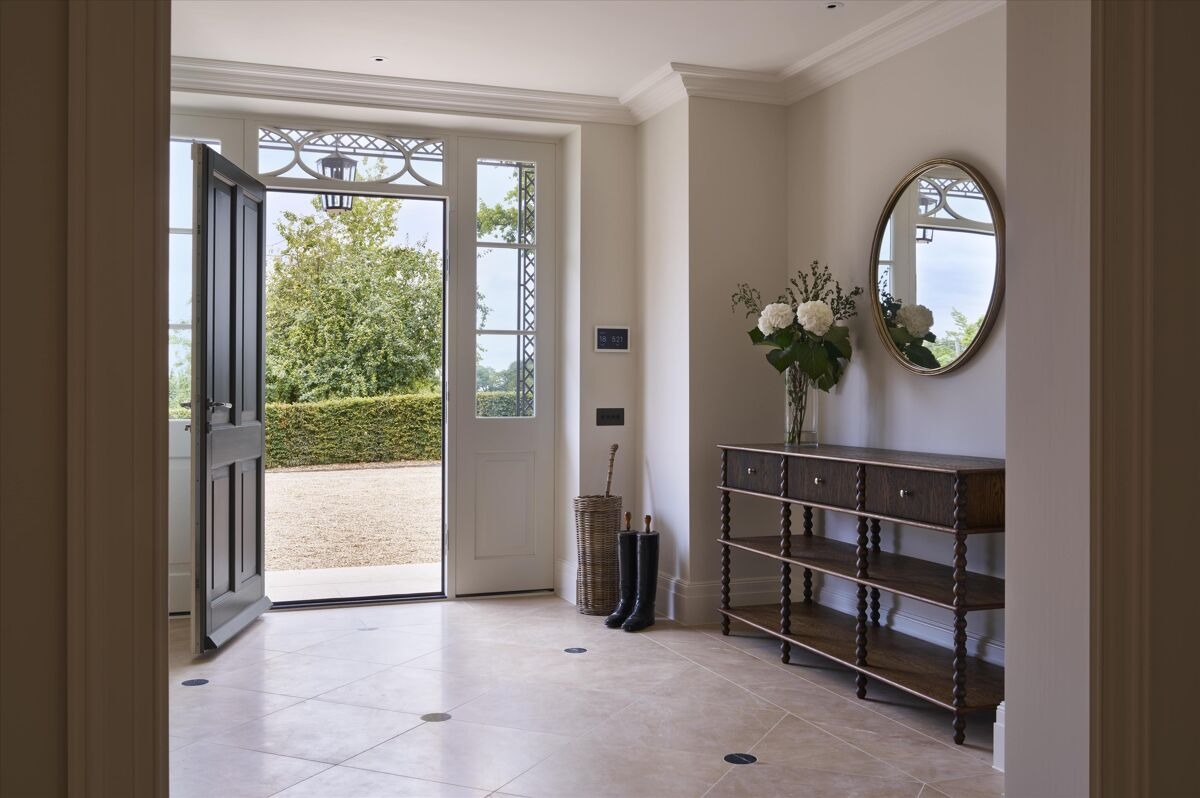
For sale via Knight Frank — see more details and pictures.

Hertfordshire — £1 million
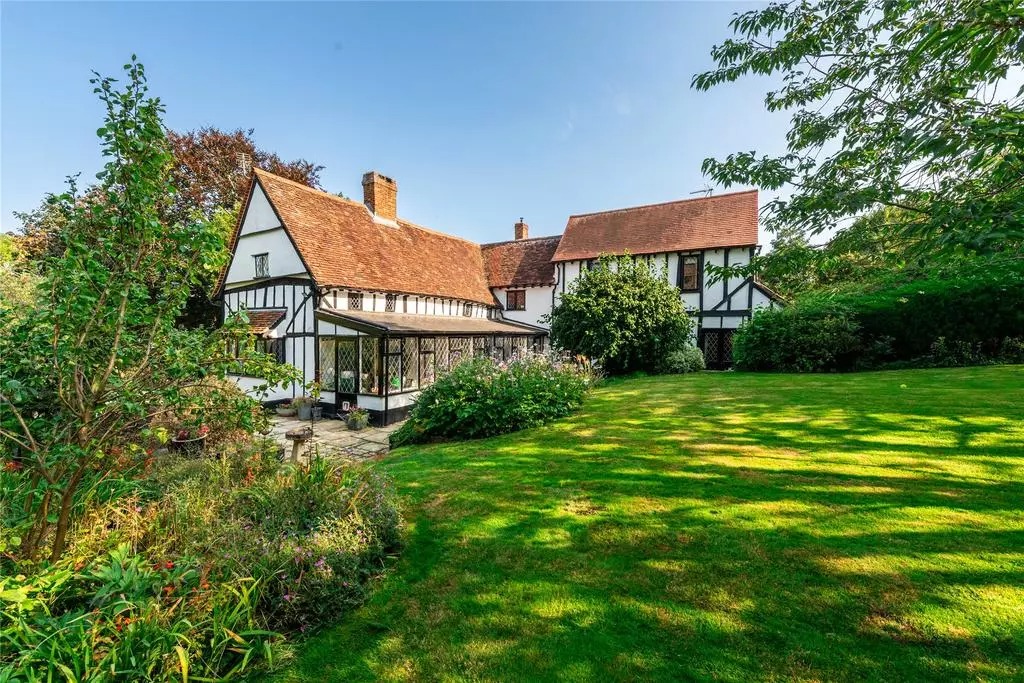
An object lesson in blenind old and new at this five-bedroom house in Buntingford, where a 17th century, Grade II-listed house has been brought brilliantly into 2025. There are four reception rooms, 2,280sq ft of space and a third of an acre of charming mature gardens.
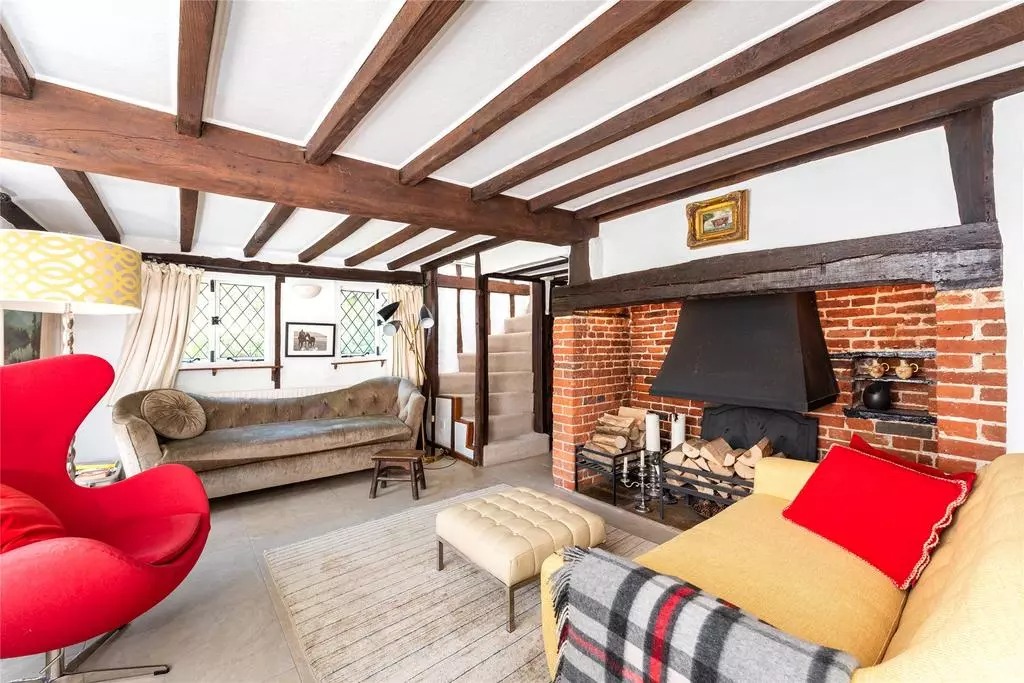
For sale via Michael Graham — see more details and pictures.
Devon — £2 million

A 275-year-old mill that offers not just a comfortable family home, but also a lifestyle business with five holiday cottages on this 4.6 acre site.
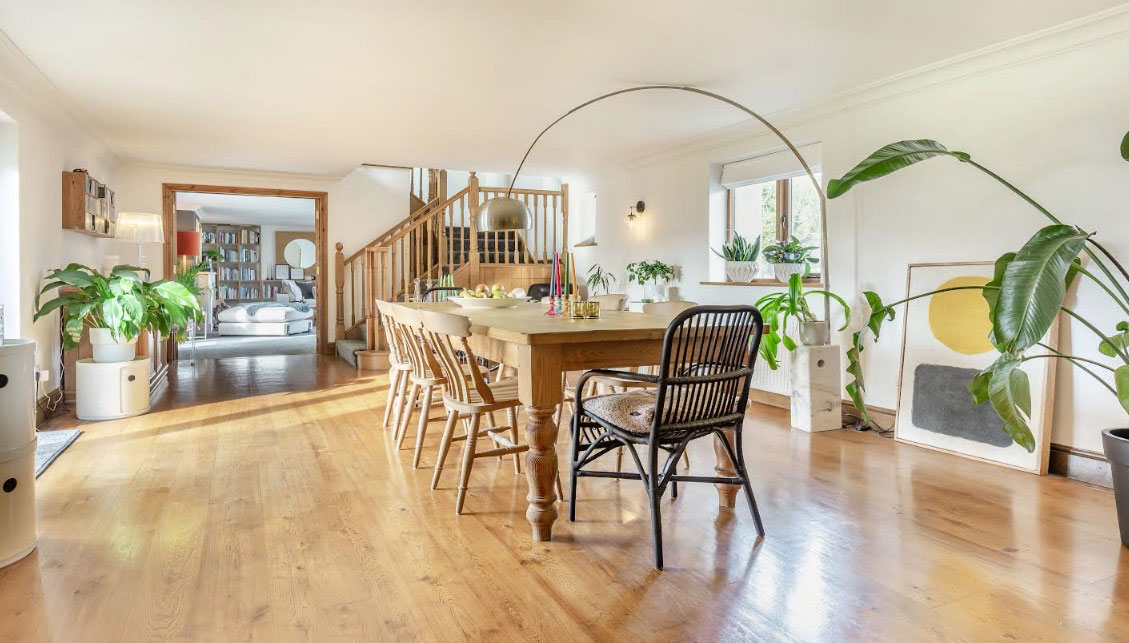
For sale via Savills — see more details and pictures.
Devon — £1.8 million
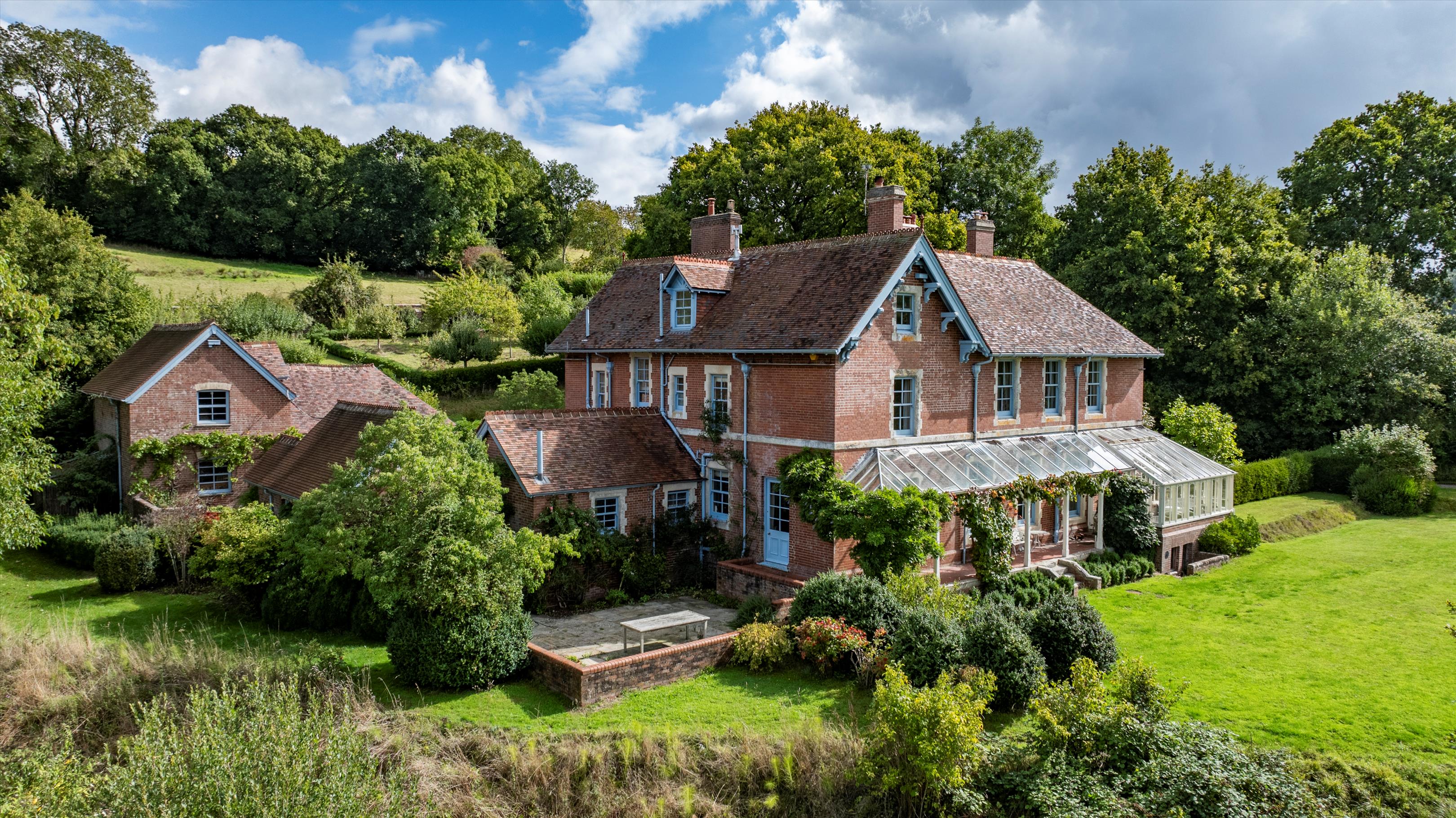
Quite simply a beautifully built, furnished and finished home near Membury, with magnificently bucolic setting, four-poster beds, free-standing baths and gorgeous gardens.
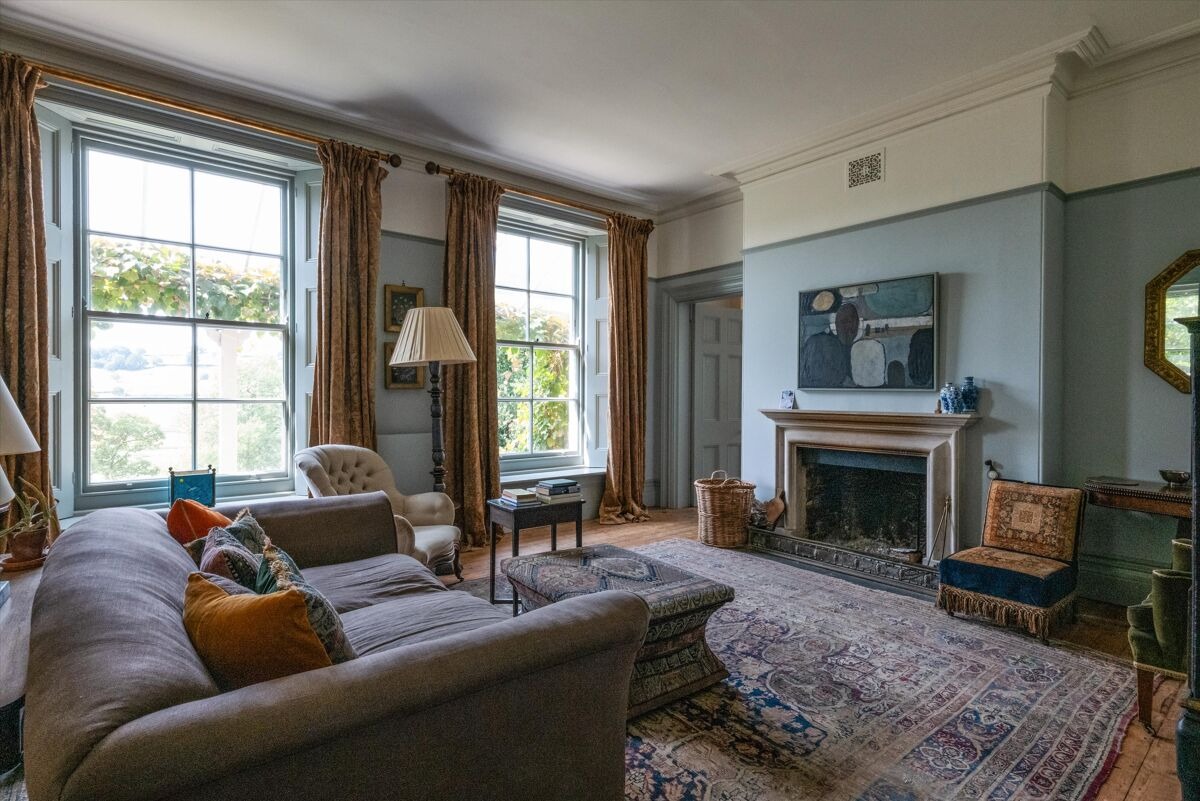
For sale via Knight Frank — see more details and pictures.
Gloucestershire — £2,200,000

A stunning, five bedroom detached villa on a highly sought-after road just moments from Montpellier, with a private garden and games room.
For sale via Knight Frank — see more details and pictures.
Berkshire — £1,800,000
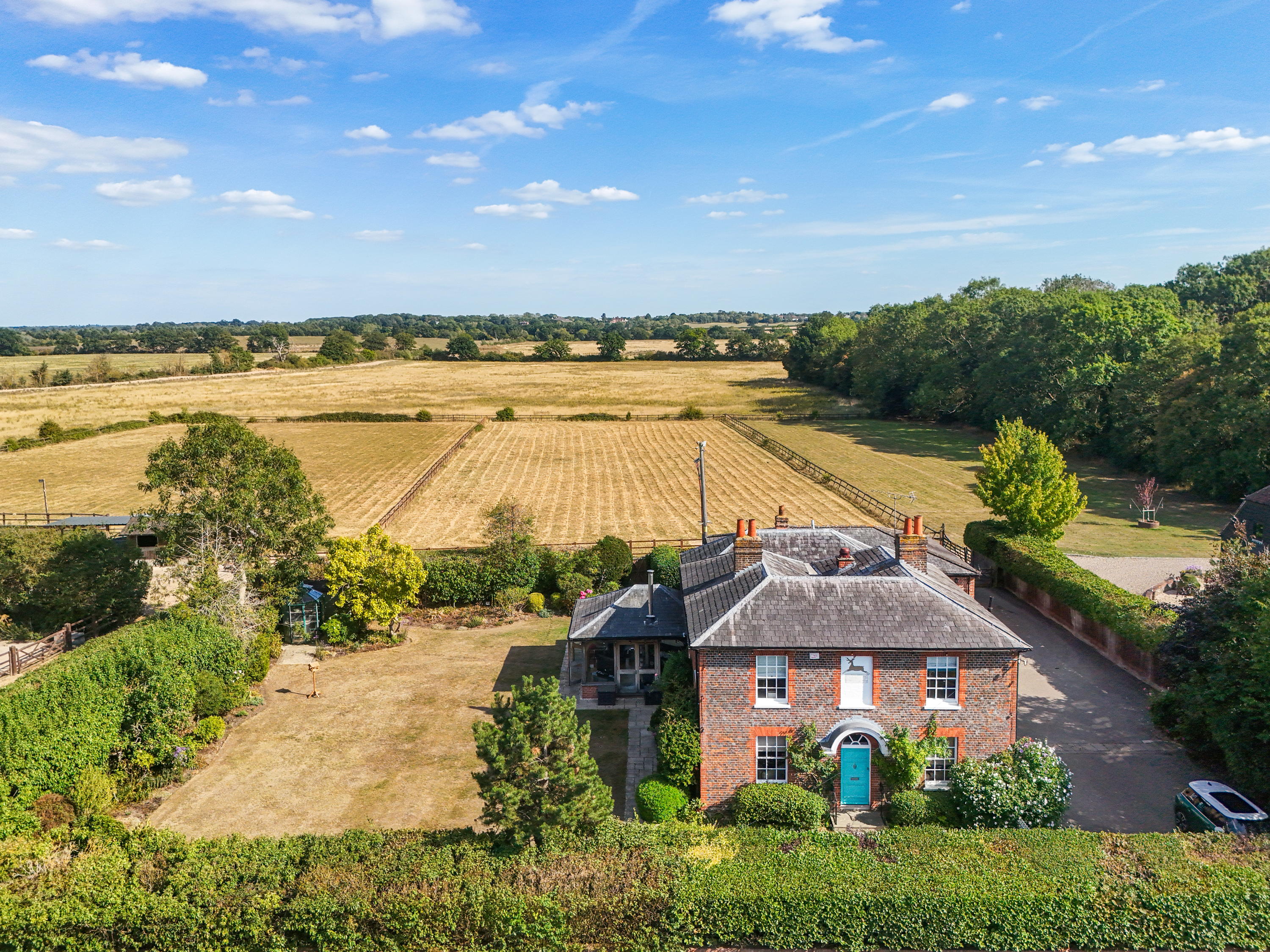
A stunning Grade II-listed country home in Binfield, refurbished over recent years, with equestrian facilities, offering charm and contemporary living.
For sale via Fox Grant — see more details and pictures.
Jersey — £1,600,000
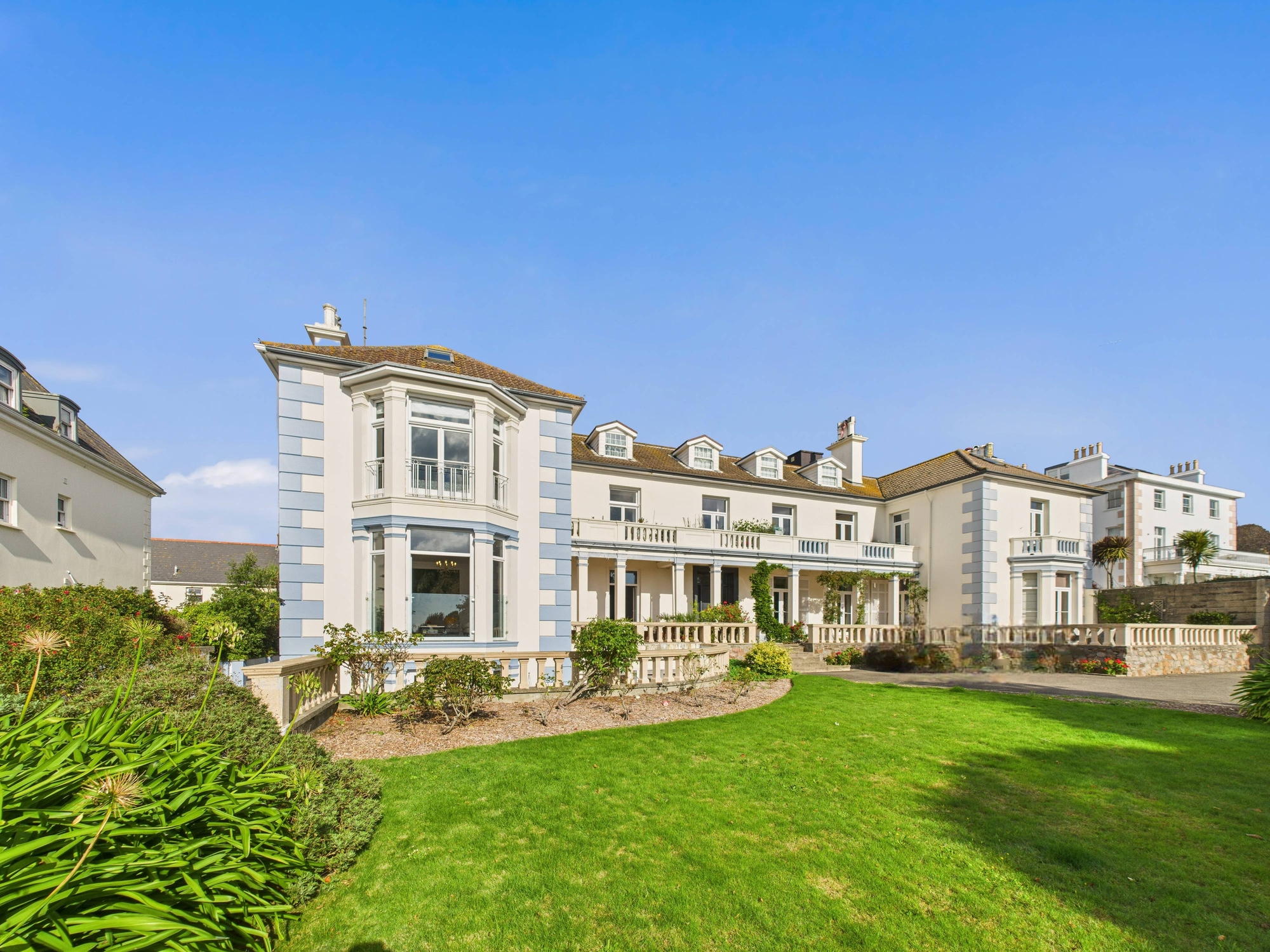
Renovated Georgian-style 4-bed with sea views, smart tech, luxe kitchen, private garden, terraces & EV-ready garage.
For sale via Fine & Country — see more details and pictures.
Somerset — £1,500,000

A 17th century farmhouse with adjoining cottage, six acres plus stables, a manege and breathtaking views of Somerset Levels
For sale via Sandersons — see more details and pictures.
Devon — £1,350,000
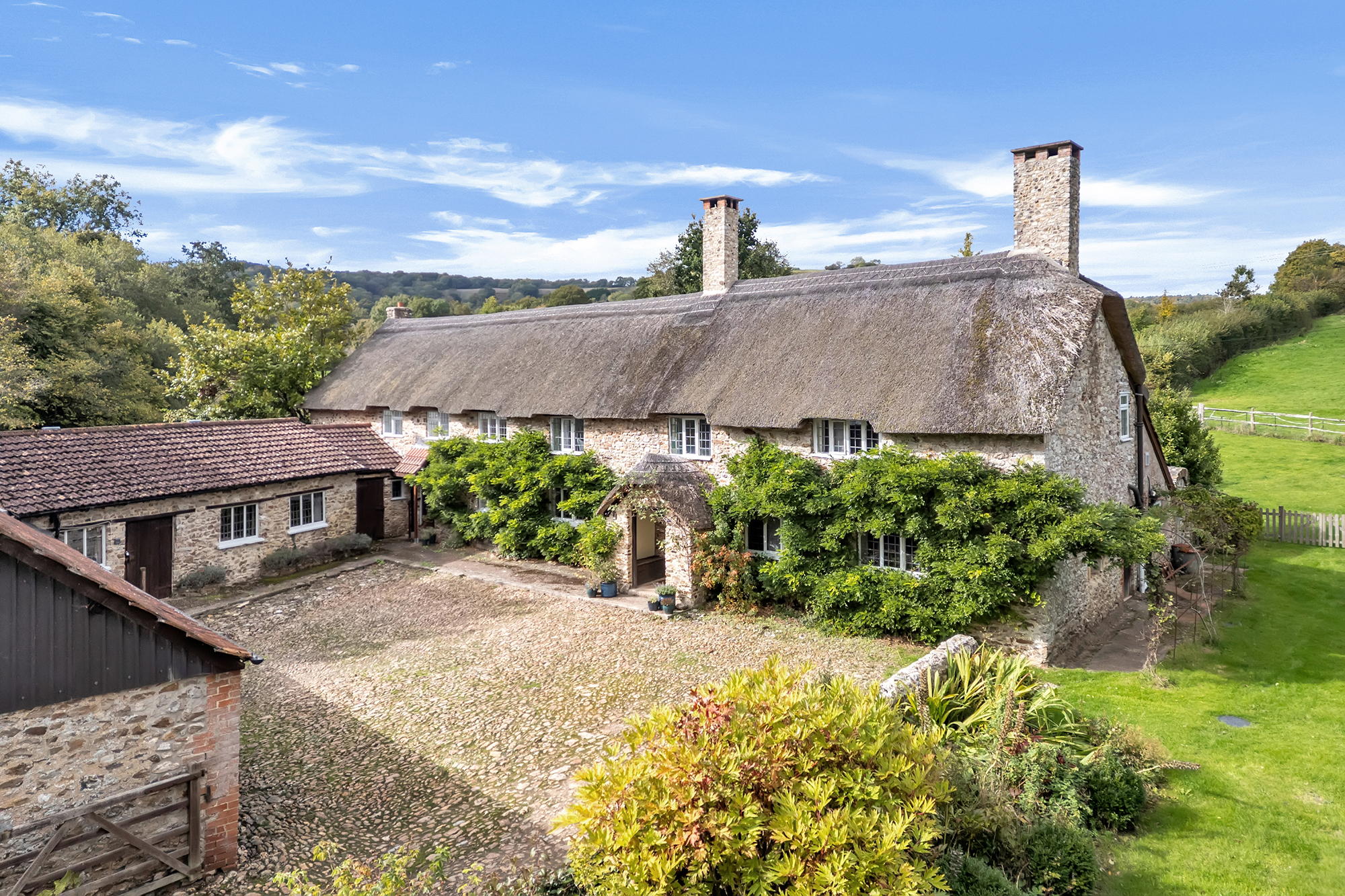
Grade II listed Devon Longhouse set in around 12 acres of gardens, grounds and paddocks, with a holiday cottage, equestrian facilities and views.
For sale via Stags — see more details and pictures.
Bedfordshire — £1,175,000

Beautiful 17th century rectory, with over an acre of land, an annexe, five-plus bedrooms, garden snooker room with bar, and wonderful views
For sale via Artistry — see more details and pictures.
Warwickshire — £1,100,000
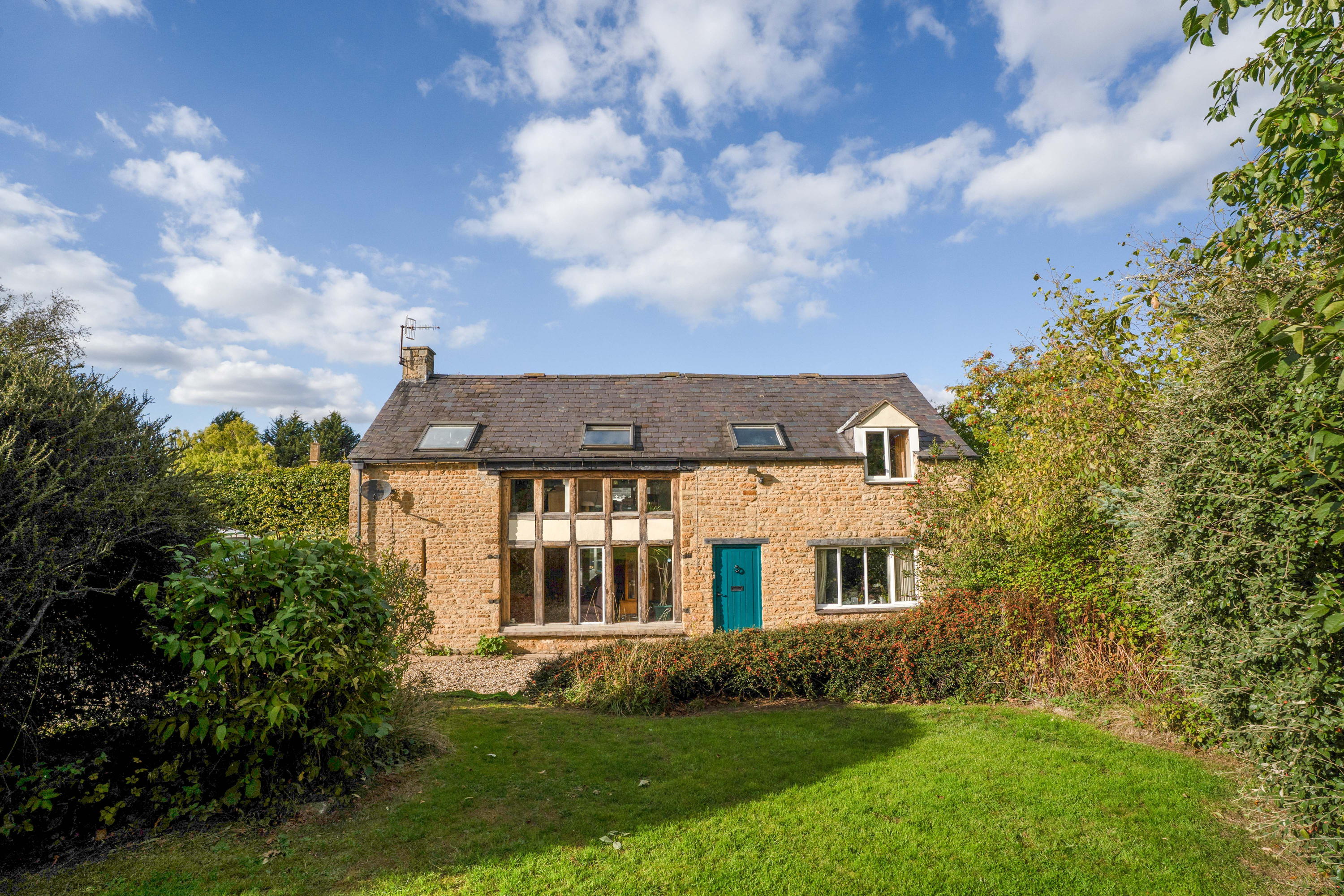
Period barn conversion occupying a secluded plot in the heart of a desirable village.
For sale via Hayman Joyce — see more details and pictures.
Hertfordshire — £3,000,000
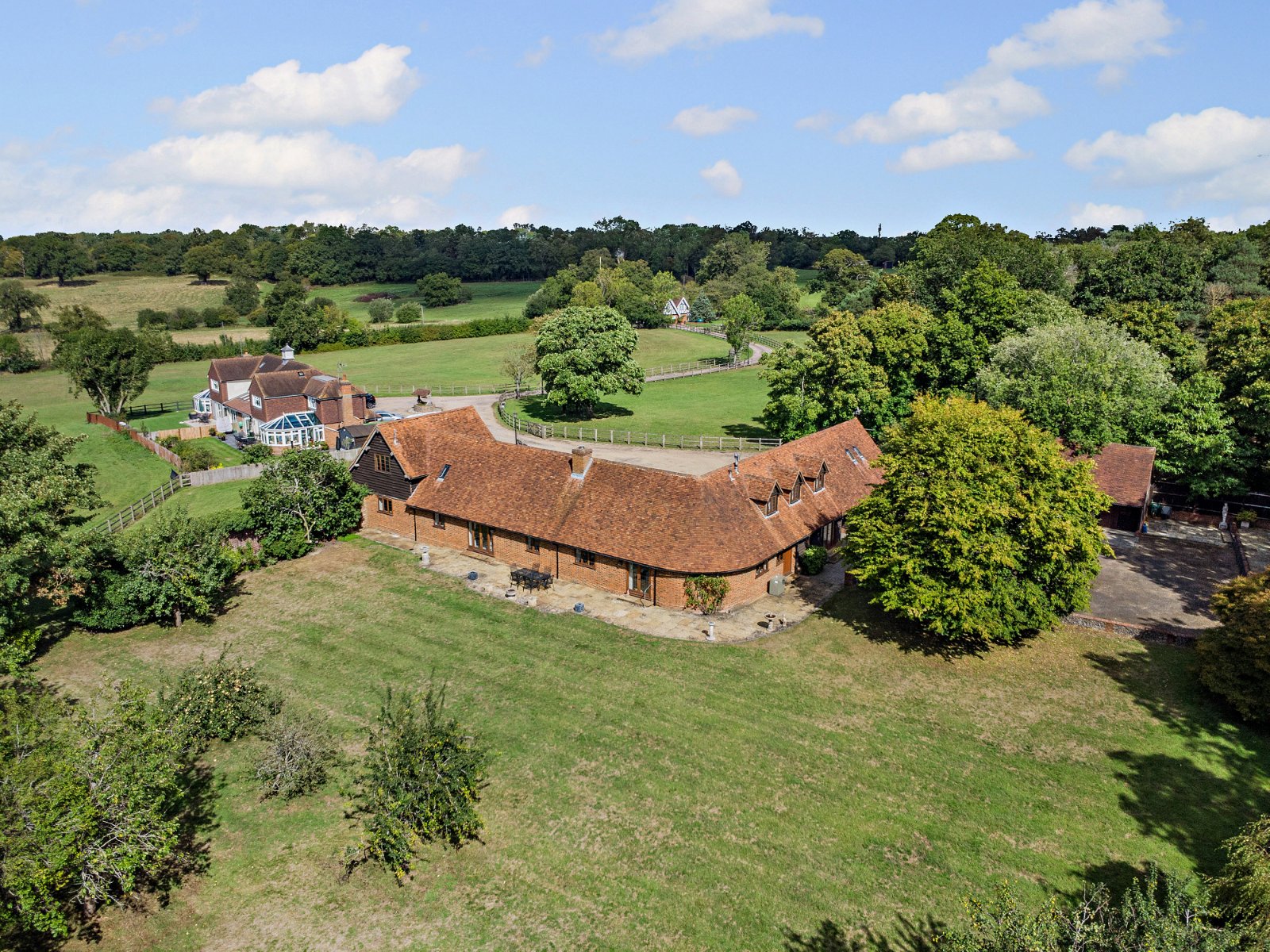
Country life on the outskirts of London in this re-purposed estate workshop near Radlett, with 3,000sq ft of space, just over two acres and easy access to the centre of the metropolis.
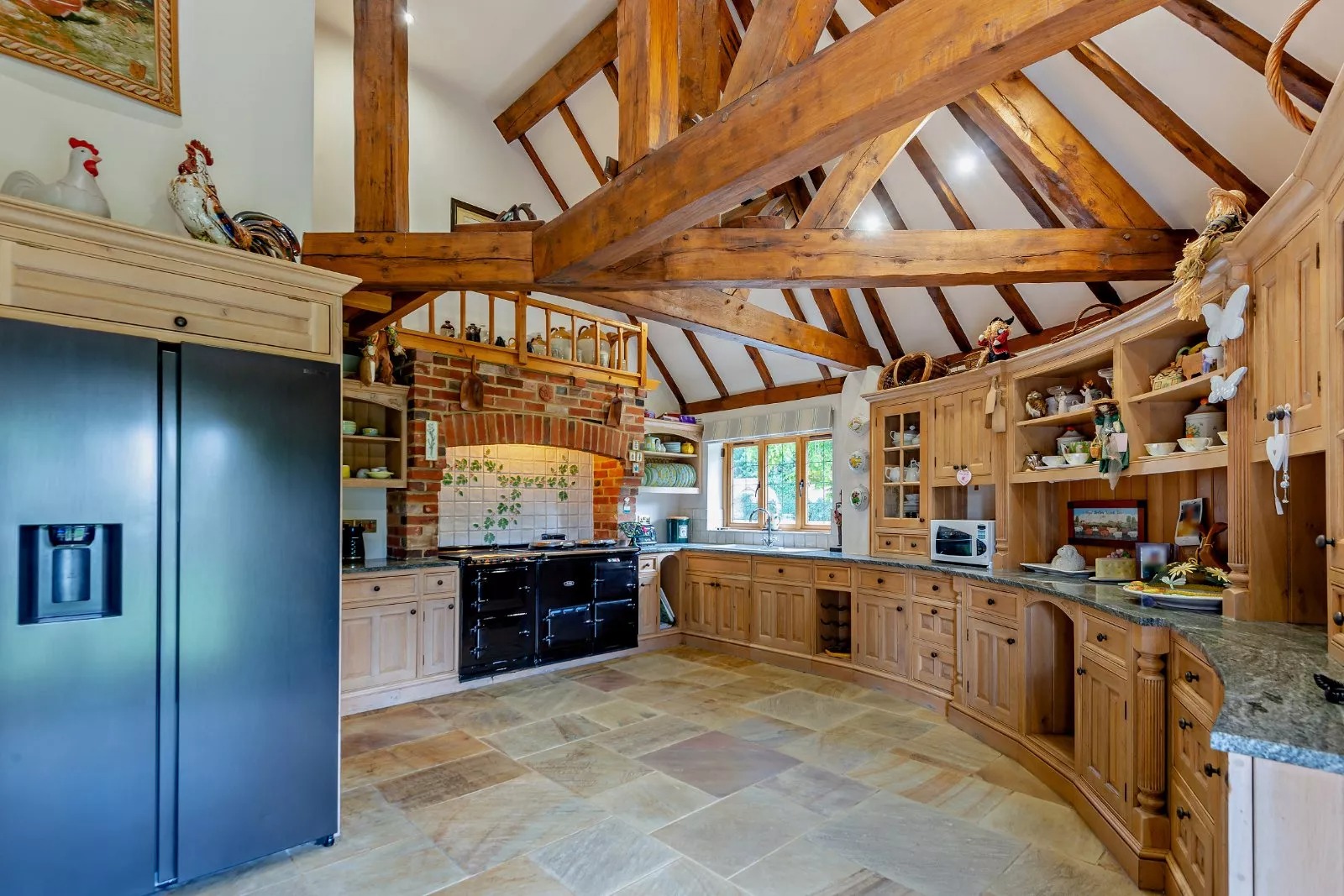
For sale via Strutt & Parker — see more details and pictures.
Northamptonshire — £1,150,000

A country kitchen and a home cinema coexist happily in this charming four-bedroom house in Litchborough, with gated driveway and extensive grounds.

For sale via Michael Graham — see more details and pictures.
Essex — £5,950,000

A country house setting with a modern house vibe — but very much a home for those who know that you live inside looking out, rather than the other way around. Huge windows provide vast amounts of light and beautiful views, while inside the home is presented in immaculate style.

For sale via Savills — see more details and pictures.
Kent — £20 million

Over 25,000 sq ft, 40 acres and a wonderful setting in the countryside near Sevenoaks, with easy access to London. This historic house has been superbly refurbished, and sits within grounds landscaped by Decimus Burton.

For sale via Knight Frank — see more details and pictures.
Northamptonshire — £985,000
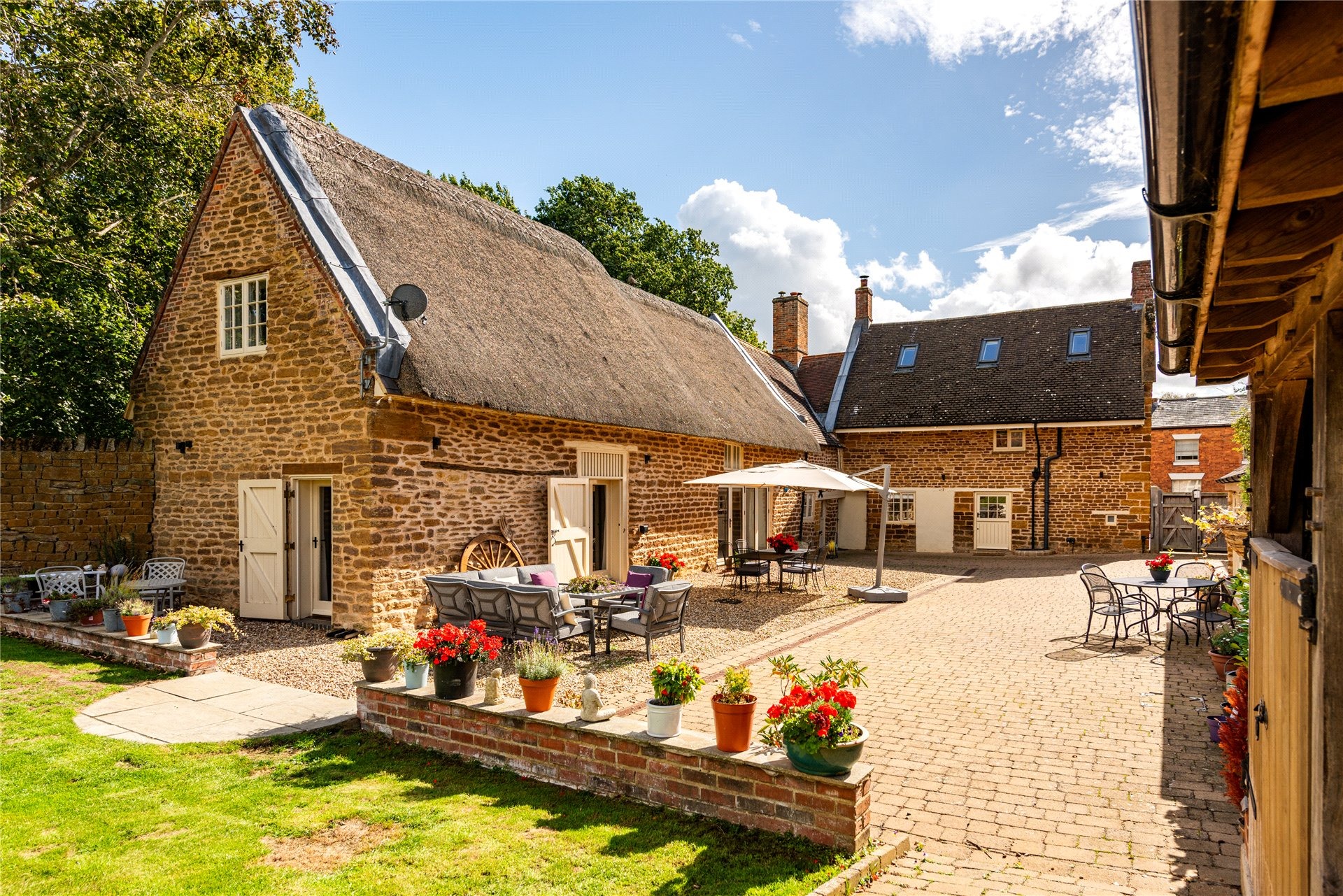
A stone-built, five-bedroom cottage with courtyard, landscaped garden and plenty of space: there's over 5,000 sq ft of accommodation, quite a find at this sub-£1m price.
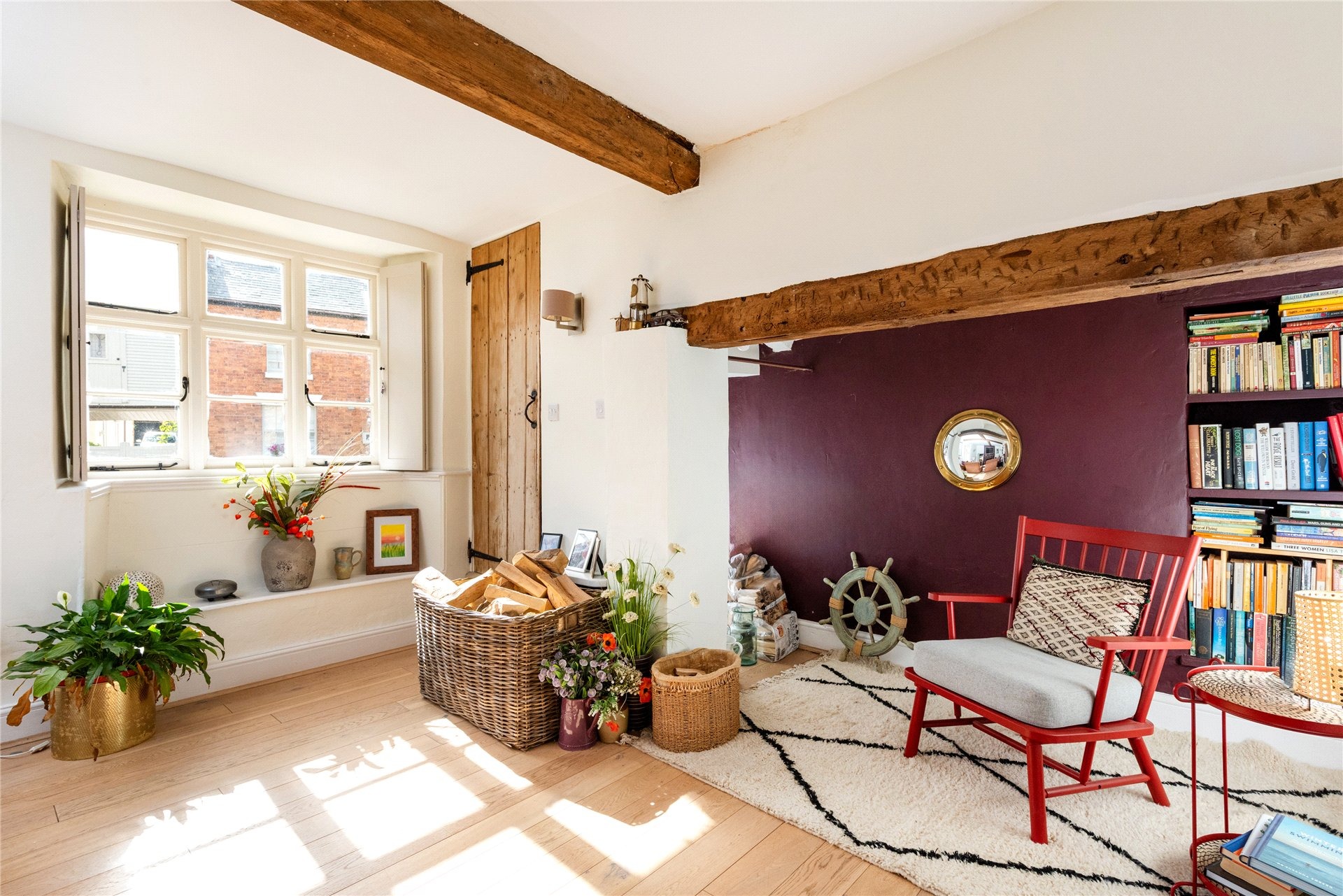
For sale via Michael Graham — see more details and pictures.
Wiltshire — £2.75 million

A converted mill that blends old and new in the utterly charming village of Bradford-on-Avon, with six bedrooms, 17 acres, stables and paddocl.

For sale via Savills — see more details and pictures.
Buckginhamshire — £1.5 million
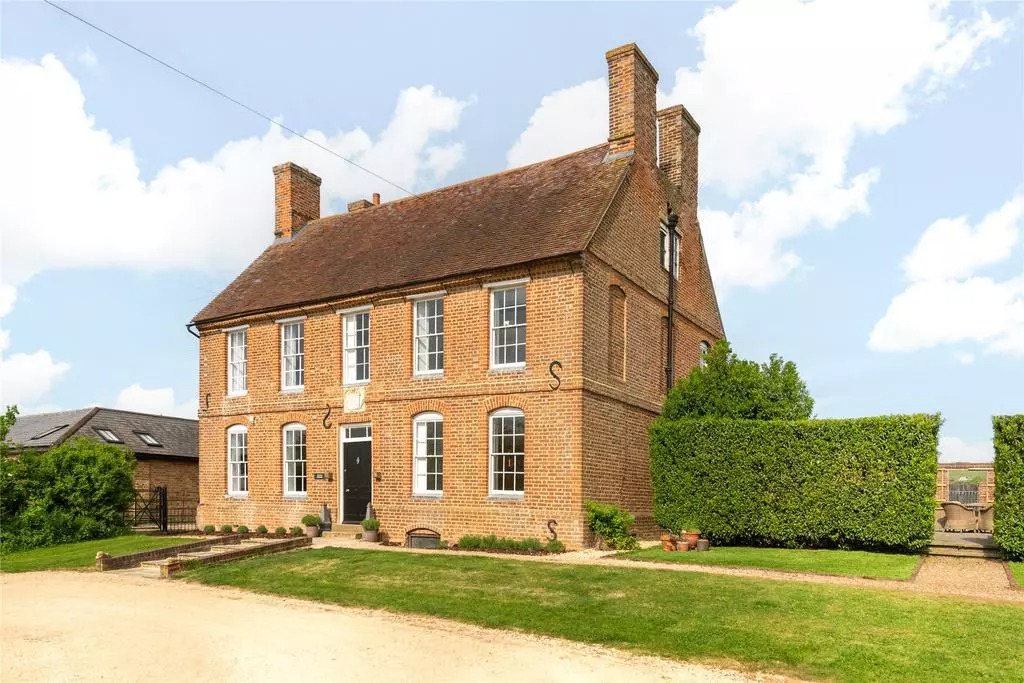
This early Georgian farmhouse has glorious views over the surrounding countryside, its own weaving driveway approach, and permission is in place to add a fifth bedroom should you choose.
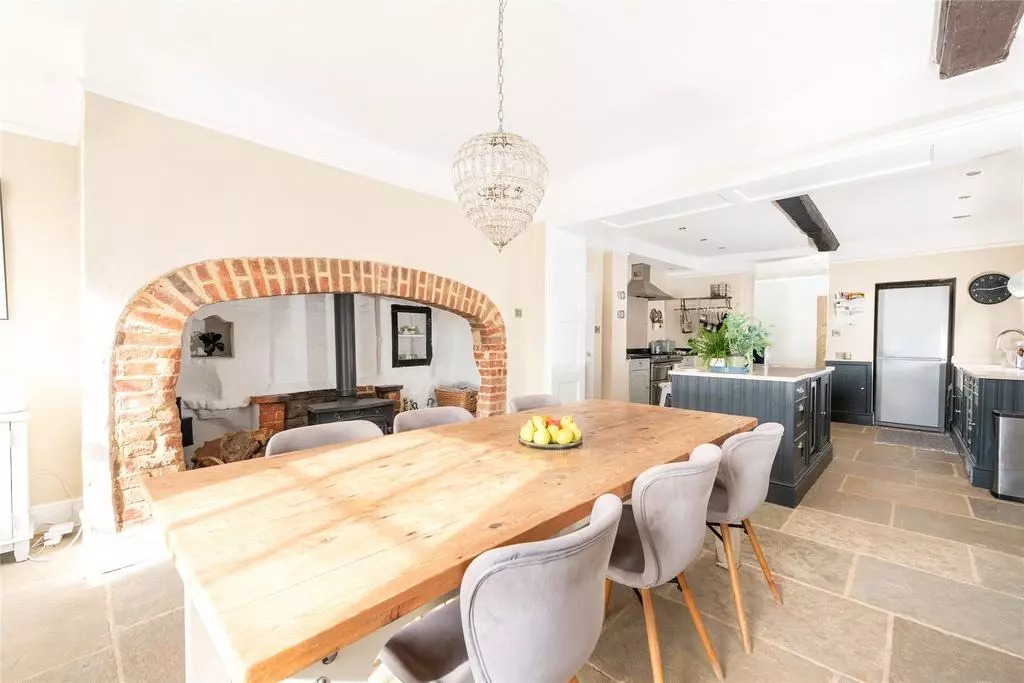
For sale via Michael Graham — see more details and pictures.
Wiltshire — £6.5 million
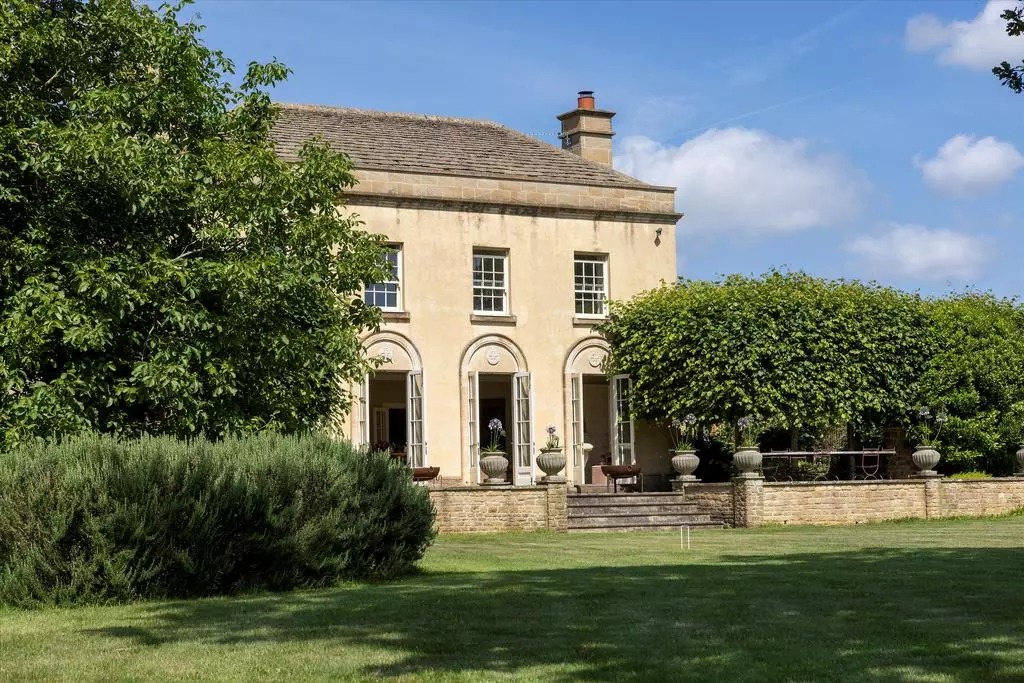
Effortlessly stylish and with a location near Calne, this property has an eight bedroom main house, plus annexe and cottage — and superb leisure facilities into the bargain.
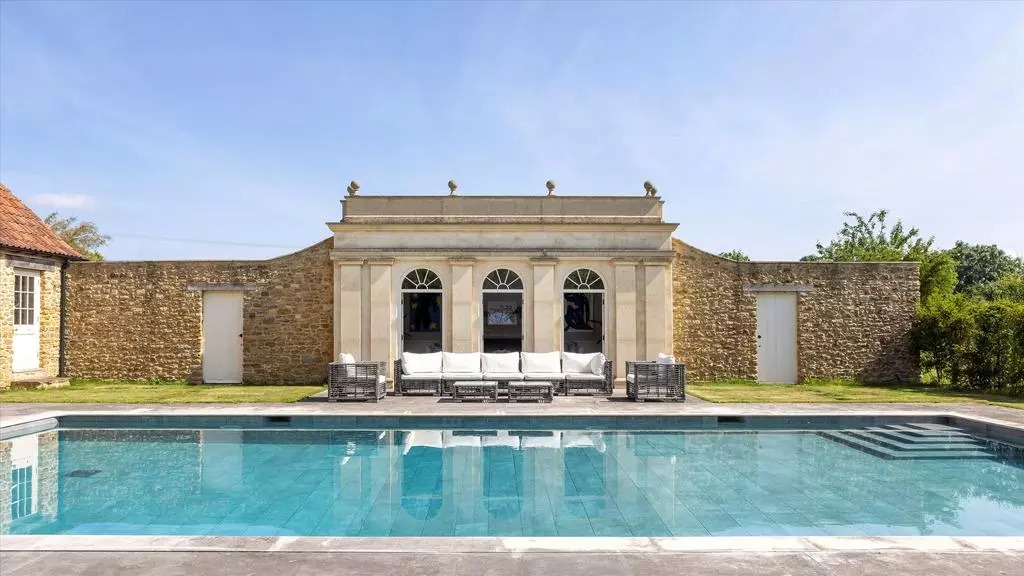
For sale via — see more details and pictures.

There are plenty of rare properties for sale on this website, but perhaps none rare than this Grade I-listed freehold Norman castle in Cumbria.

There are dining rooms, and then there's this. Not to be confused with the banqueting hall, which is also included.
Where to start. How about 23 bedrooms, 19 bathrooms, a gym, hot tub, tennis court, three cottages and a historical lineage of owners that includes Richard II and Lady Anne Clifford. Once in a lifetime.
For sale with Knight Frank. See more pictures and details for this property.
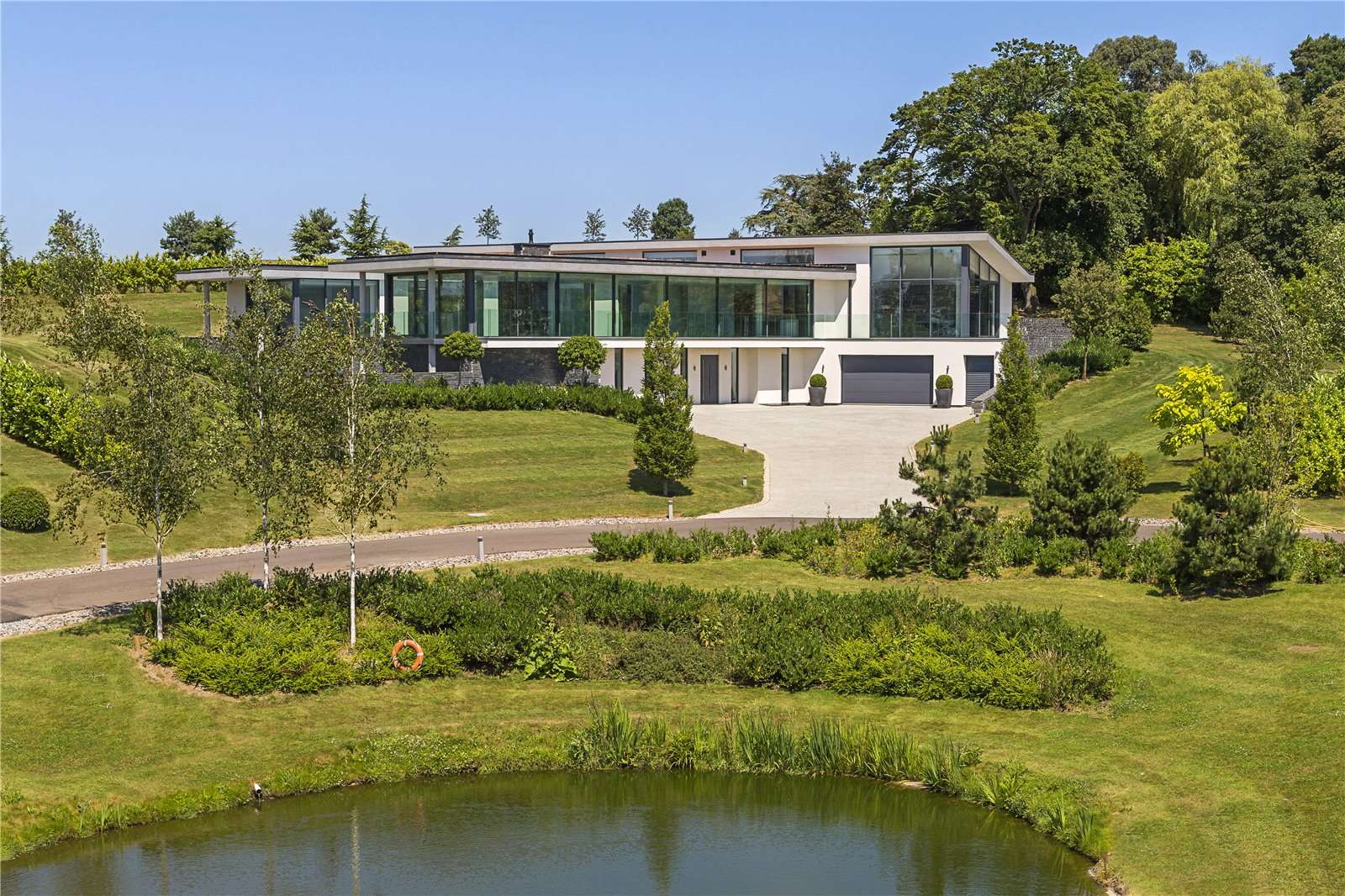
Lake View near Epping is one of five contemporary homes nestled in the private Gaynes Park Estate. And this home is a modern delight, dressed in glass, with superb views over the surrounding countryside.
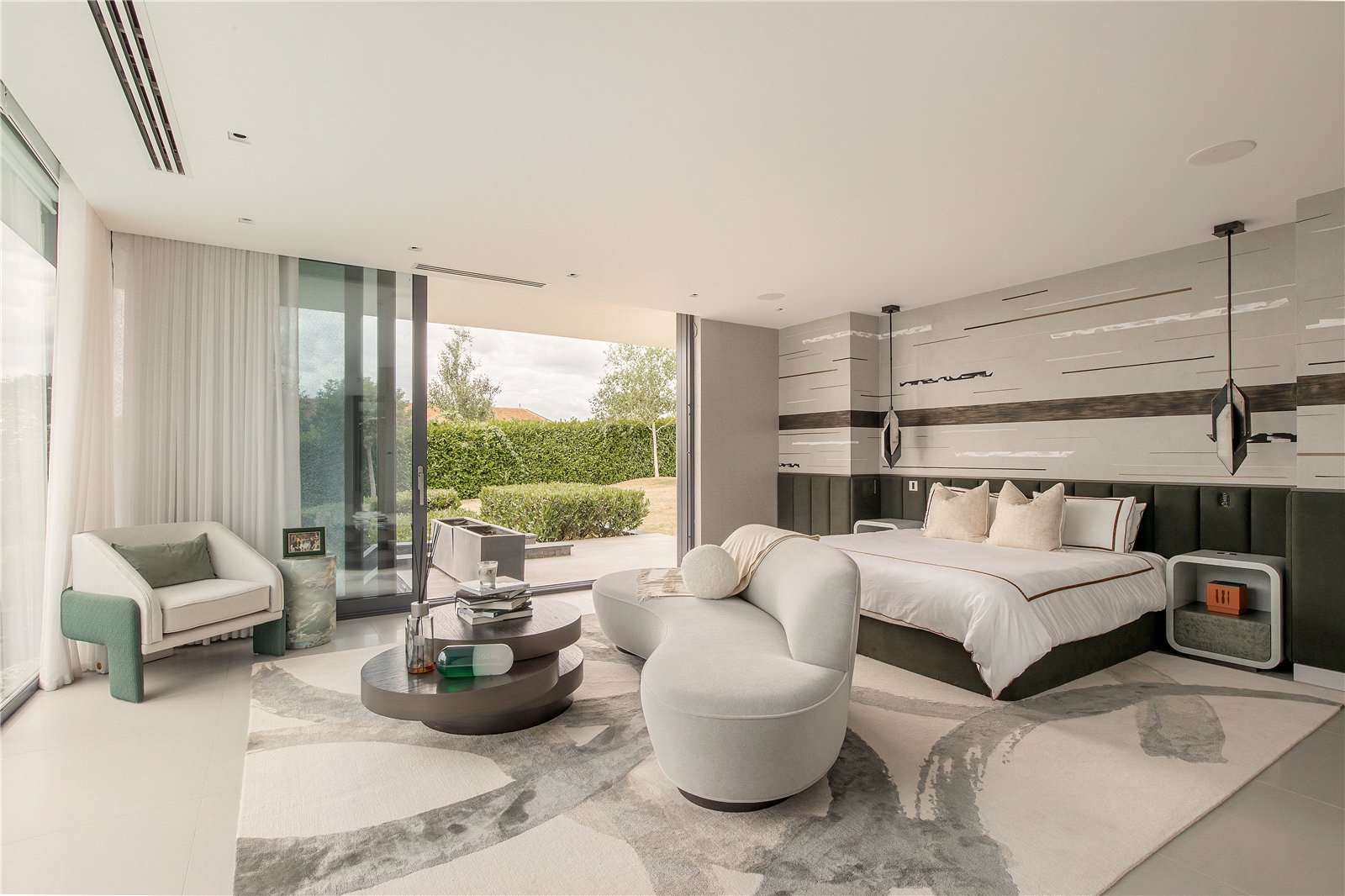
With five bedrooms, 1.2 acres of gardens and more than 10,000sq ft of living space, there is plenty of space to entertain and enjoy oneself in this contemporary beauty.
For sale with Savills. See more pictures and details for this property.
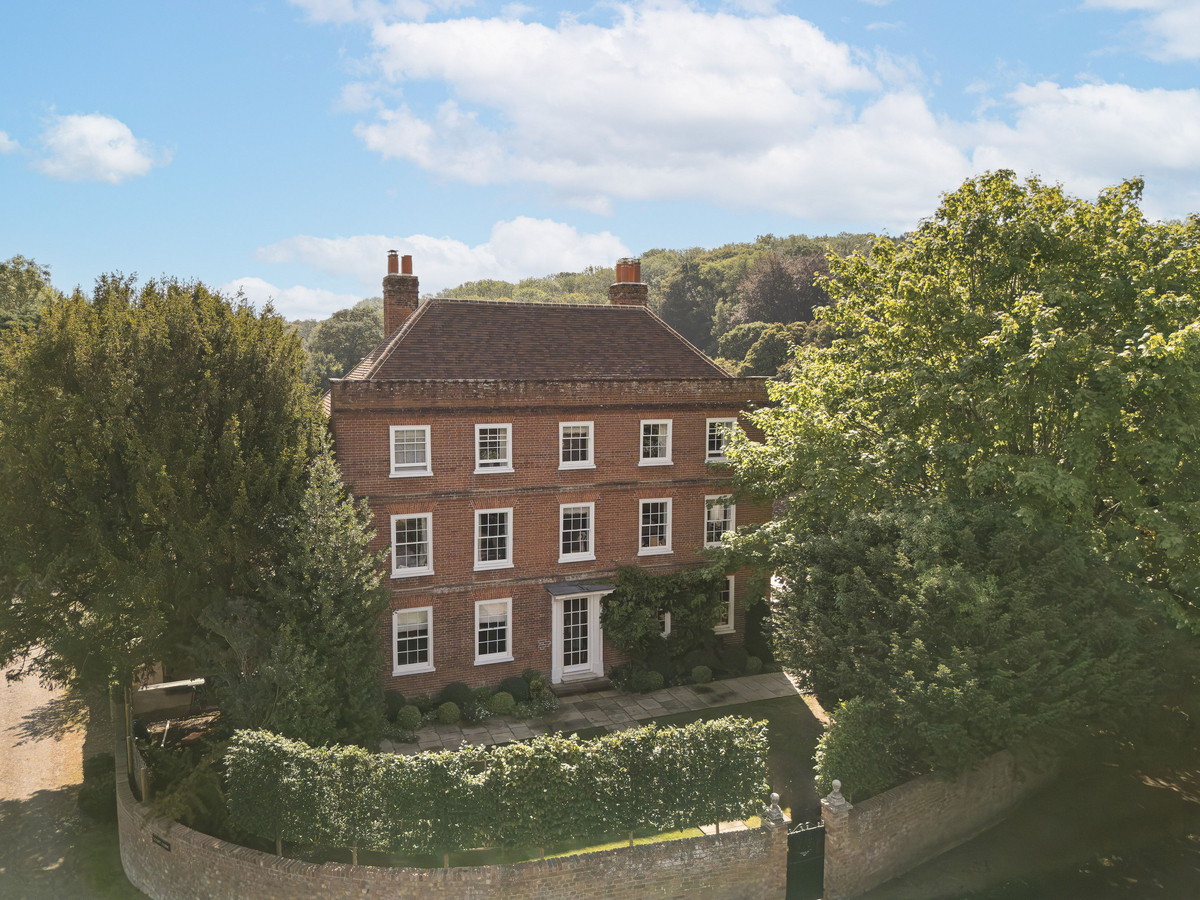
This beautiful Georgian residence, originally built in 1771, is set in the charming village of Hedgerley, some 25 miles from London.

Spanning almost four acres of gardens and grounds, it's a galaxy of amenities and luxury, with seven bedrooms, eight reception rooms, swimming pool, bespoke wine cellar and tennis court.
For sale with The Agency Group. See more pictures and details for this property.
Country Life is unlike any other magazine: the only glossy weekly on the newsstand and the only magazine that has been guest-edited by His Majesty The King not once, but twice. It is a celebration of modern rural life and all its diverse joys and pleasures — that was first published in Queen Victoria's Diamond Jubilee year. Our eclectic mixture of witty and informative content — from the most up-to-date property news and commentary and a coveted glimpse inside some of the UK's best houses and gardens, to gardening, the arts and interior design, written by experts in their field — still cannot be found in print or online, anywhere else.

